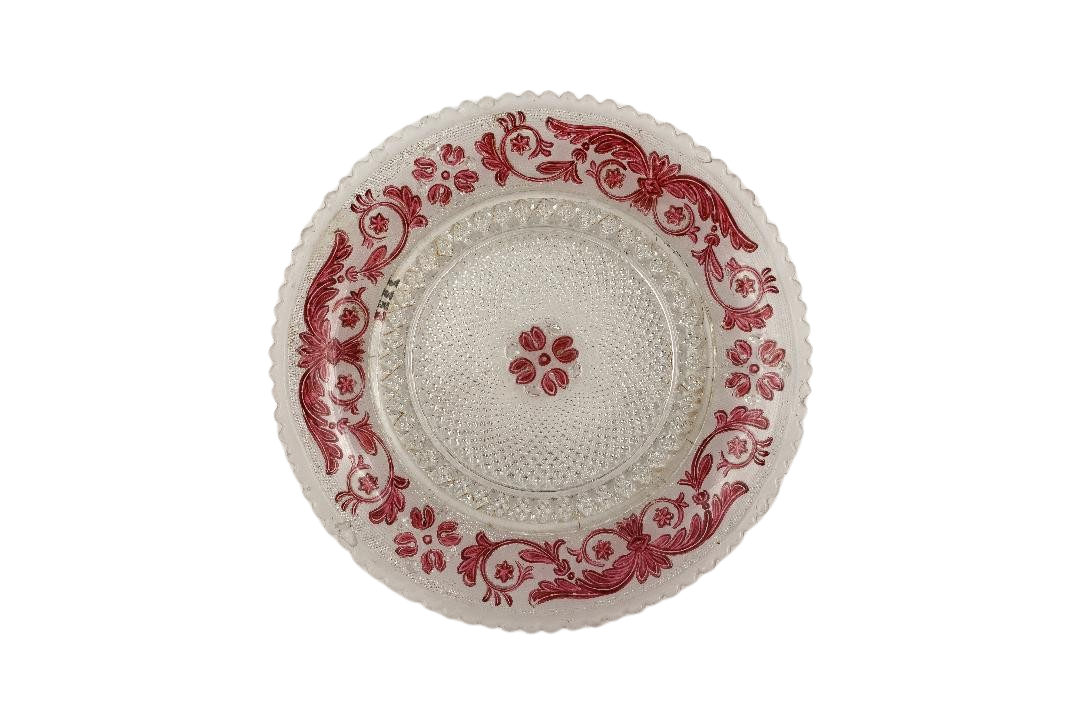
На стакленом путу: уметност стакла и репрезентација у Србији 1850-1950
Водимо вас на путовање кроз један век утемељења стакларства у Србији. Пред вама је сачувана својеврсна ризница предмета од стакла из музејских и државних колекција насталих на стакленом путу привредне и културне емaнципације српског друштва. Они представљају фрагилне и драгоцене остатке прошлости важне за разумевање српске културе.Пројект је део обележавања Међународне године стакла 2022 (International Year Of Glass 2022) и пратећи сегмент изложбе Музеја примењене уметности реализоване у 2022/23. Поред организатора у пројекту су учествовали Историјски музеј Србије, Музеј града Београда, Музеј Југославије, Етнографски музеј, Народни музеј Србије, Завичајни музеј Јагодине, Музеј у Смедереву, Народни музеј Кикинда, Завичајни музеј Параћин, Задужбина краља Петра I Карађорђевића, Управа за заједничке послове републичких органа Републике Србије и Фонд Краљевски двор.
Развој обликованог стакла у националној производњи
Од прве мануфактуре Аврама Петрoнијевића (1846) до модернизоване производње Српске фабрике стакла у Параћину (од 1906), у константним тежњама за одржавање континуитета у стакларској производњи и у зависности од увезеног знања, без јасне визије о систематском приступу у решавању проблема недостатка домаћих мајстора потребних за развој стакларства, није било великог простора за развој аутентичног моделовања предмета. Позајмице у продукцији употребног стакла су се огледале у преузимању технологије, начину обликовања, у декоративним техникама, чак и у декоративним шемама. Иако је имала слабије квалитете у производњи и естетици употребног сакла у односу на велике европске центре, примењена уметност стакла на нашем тлу од 1850. до 1950. године добијала је своје облике. У раздобљу од једног века којег су обележиле велике друштвено-историјске кризе и ратови, покретање индустрије уопште, а посебно индустрије стакла на нашем тлу било је изузетно тешко. Велику улогу у развоју стакларске производње имали су појединци-визионари и тежње државе ка модернизацији друштва коју је видела кроз покретање индустрија, па тиме и индустрије стакла.
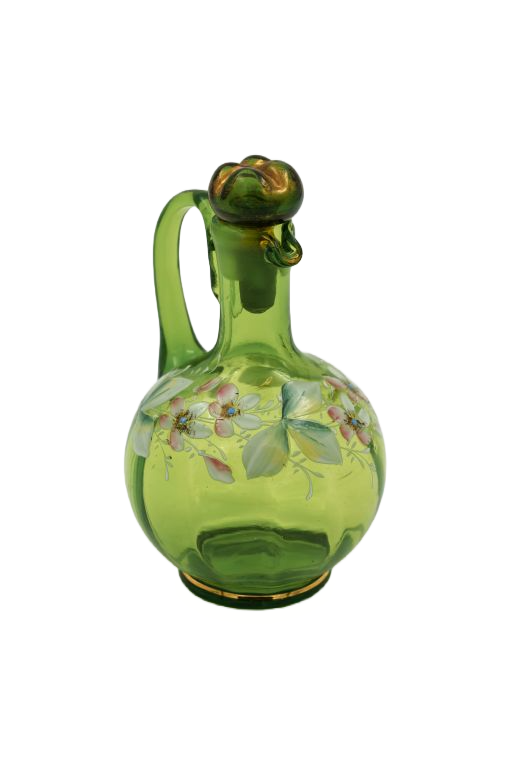
Држава, производња и естетика стакла
Уметност и обликовање употребног стакла у Србији у периоду од 1850. до 1950. године развијани су делом у фабричким оквирима, а делом у занатским радионицама за дораду, декорацију и обликовање стакла. Иако је начелно производња стакла у Србији посматрана као ,,национална” и то је могла бити искључиво у државно-економским стратегијама, реално је та производња, и у естетском и у технолошком смислу је продукт једне мултикултуралне средине која се развијала у фабричким комплексима и занатским радионицама. Исто као и процеси формирања саме индустријске производње, и обликовање употребних предмета од стакла зависило је од увезеног знања и странаца мајстора. Теоретски, мешовите, односно вишенационалне заједнице у фабричким комплексима биле су прогресивније, доприносиле бржем развоју и размени сазнања, што је требало да допринесе позитивним резултатима. Примена нових технологија производње и техника декорације по правилу би требало да се лакше одвија у таквим срединама. Ипак, историјске околности којима је Србија била изложена током једног века (1850–1950) нису увек ишле на руку развоју. Уметност обликованог употребног стакла у Србији суштински је пратила развој стакларства и индустријализације и одсликавала је све оне нивое трансформације друштва које је конзумирало ту врсту примењене уметности. Чини се да је сваки вишедеценијски напор био прекидан економским кризама, ратовима, када су заједно са људством нестајали и уметност стакла, стечено знање и вештине. Са пуно амбиција и невероватног труда, изнова градећи стаклени пут, наша средина се суочавала са поновном тежњом за стицањем вештина, образовања и уз константан недостатак капитала, које су пратили и ратови и велике кризе у првој половини 20. века. Производња домаћег стакла, исто као и увоз, имала је значајну улогу у креирању грађанског друштва Србије. Кроз различите примере ,,националне” производње заправо се прате утицаји, улога и развој обликованог стакла. Употребно стакло у различитим културним моделима преузимало је различите функције: од политичко-националне и државне пропаганде, преко личне репрезентације, до културног и статусног потврђивања појединаца. Од почетка индустријске производње у Србији примећују се стилски утицаји средњоевропских стаклара. Захваљујући мајсторима странцима и њиховом искуству стакларство је имплементирано у Србији и развијано у стилском и производном смислу. Идентично модерним стремљењима у Европи и појам аутентичне националне примењене уметности у Србији на преласку између два века постајао је све важнији. Он је доприносио осећају историчности и древности националног наслеђа и у државној репрезентацији добијао све већи значај. То се делом одразило на стакларску производњу, коју овде пратимо само у визуелним декоративним елементима. У производњи се уочавају све оне врсте облика и форми који су се ослањали на општа стилска кретања и симболе модерности европских центара. Управо кроз тај сегмент грађански слој покушава да се приближи савременом начину живота и себе представи као део модерног света. У том смислу се може тумачити и рапрезентација појединца, али и интерпретација „националне” производње.
Стакло инспирисано националном идејом и хералдиком
У средини српског културног круга уметност обликованог стакла била је суштински везана за грађанску културу, док се обично индустријско и амбалажно стакло могло наћи у широким друштвеним круговима. Током 19.века уметност и визуелна култура имали су значајну улогу у приватном животу у изградњи нациналног идентитета. Полазећи од државних и националних идеолошких утицаја у друштву, користећи визуелно прихватљиве моделе украшавања у декорацији стакла, користе се хералдички мотиви, представе с патриотском тематиком, портрети припадника националног интелектуалног пантеона, националних хероја. Уређење домова, опремање домаћинстава артифицинираним и луксузним предметима било је подређено актуелним културним обрасцима. У првој половини 20.века утицаји југословенских идеја и новонастала културна клима имали су јак утицај на развој производње али и на декорацију употребног стакла.

Чаша са грбом Кнежевине Србије
Кнежевина Србија, око 1850.Јагодина, Мануфактура Аврама Петронијевићаливено фасетирано стакло, црвена лазура, боје, трагови позлатевисина: 13 cmМузеј примењене уметности, инв. бр....

Чаша са грбом Кнежевине Србије
Кнежевина Србија, око 1850.Јагодина, Мануфактура Аврама Петронијевићаливено фасетирано стакло, жута лазура, боје, трагови позлатевисина: 13 cmМузеј примењене уметности, инв. бр. 22...

Чаша са грбом Кнежевине Србије
Аустријско царство, око 1860.Хрватска, Фабрика стакла Осредек (?)двослојно ливено стакло, црвена лазура, брушење, гравирањевисина: 12,7 cmМузеј примењене уметности, инв. бр. 5096

Чаша са грбом Кнежевине Србије
Аустријско царство, Бохемија, око 1860.ливено фасетирано стакло, црвена лазура, боје, позлатависина: 13 cmМузеј примењене уметности, инв. бр. 11481

Чаша са грбом Кнежевине Србије
Аустроугарска монархија, последња трећина 19. векаливено стакло, црвена лазура, боје, пескирањевисина: 12,5 cmМузеј примењене уметности, инв. бр. 22116

Чаша-пехар са грбом Кнежевине Србије
Аустроугарска Монархија, до 1882. (?)у калупу дувано стакло, пресвучено зеленом бојом, брушено; емајл, златна пастависина: 14,7 cmМузеј примењене уметности, инв. бр. 11476

Чаша за жестоко пиће са грбом Краљевине Србије
Краљевина Србија, око 1903.Јагодина, Фабрика стакла Нацко Јанковић и синдувано стакло, ецовање, сребрна тракависина: 9 cmМузеј примењене уметности, инв. бр. 23120
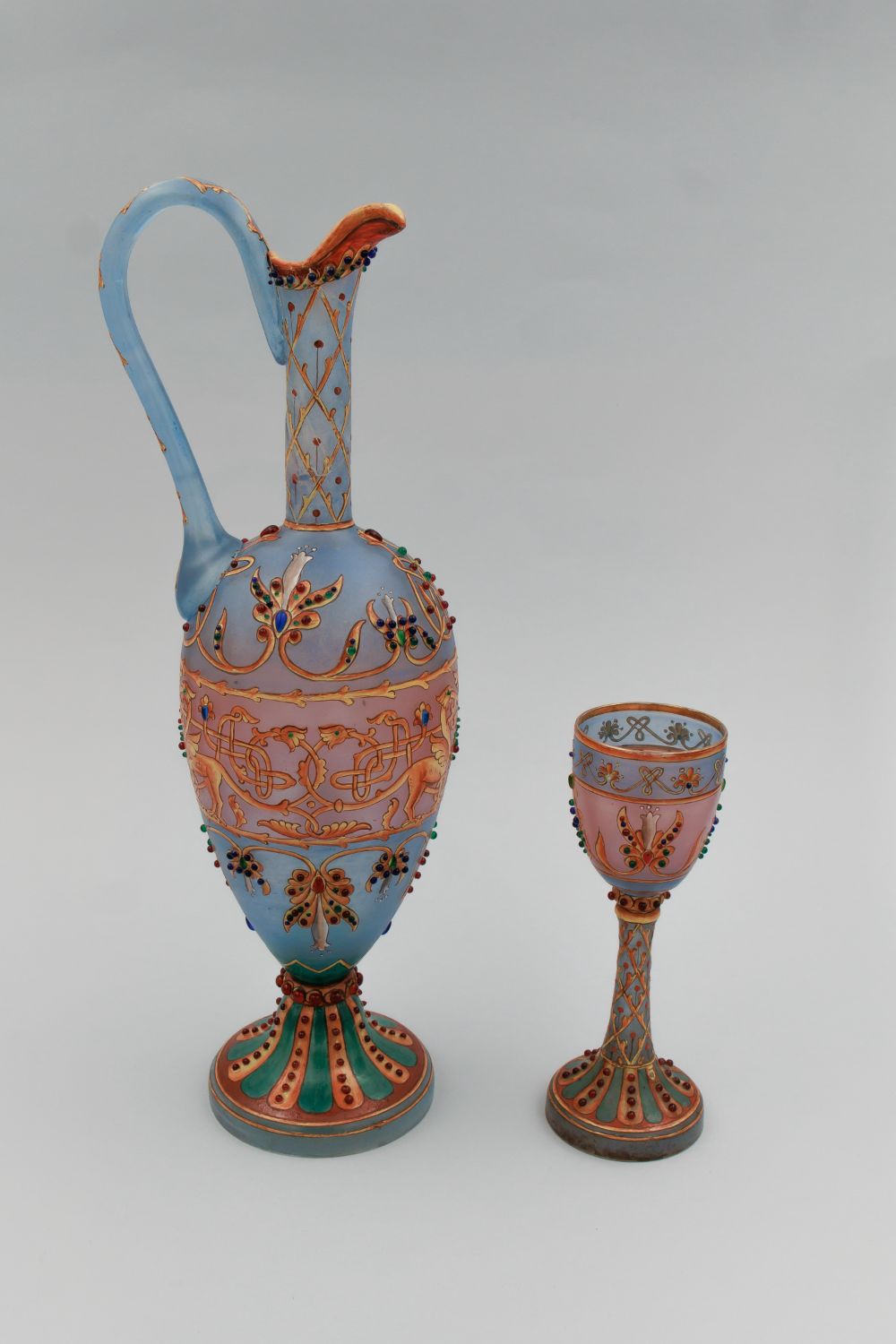
Бокал и чаша
Аустроугарска монархија, око 1906.декорација: Велика Кикинда, Прва српска радионица за осликавање стакла и порцелана Уроша Чавића према нацрту Владислава Тителбахадувано, матирано стакло, ст...

Бокал с представом Стефана Првовенчаног
Аустроугарска монархија, прва деценија 20. векаФабрика стакла Храстникдекорација: Велика Кикинда,Прва српска радионица Уроша Чавића према предлошку Владислава Тителбахаливено матирано с...

Пехари Косте Средојевића (са грбом Краљевине Србије и портретом црногорског кнеза Николе Петровића)
Аустроугарска монархија, Фабрика стакла у Храстнику, прва деценија 20. векадекорација: Велика Кикинда, Прва српска радионица Уроша Чавићау калупу ливено фасетирано стакло, боје, емајл, ослик...

Део сервиса за жестоко пиће са грбом Краљевине Србије
Краљевина Србија, до 1914.Параћин, Српска фабрика стакладувано стакло, ецовањевисина: 9 cmМузеј примењене уметности, инв. бр. 23122

Чаша са портретом Бранка Радичевића
Аустроугарска монархија, друга деценијa 20. векадекорација: Велика Кикинда,Прва српска радионица Уроша Чавићаливено стакло, боје, златна тракависина: 9 cmМузеј примењене уметности,...

Чаша с портретом црногорског владике Његоша Петровића
Аустроугарска монархија, друга деценија 20. векаВелика Кикинда, Прва српска радионица Уроша Чавићаливено стакло, боје, златна тракависина: 9 cmМузеј примењене уметности, инв. бр. 1...
Употребно стакло у функцији династичке пропаганде

Чаша с портретом кнегиње Јулије Обреновић
Аустријско царство, око 1860.црвено ливено стакло, златна паста, боје; аплицирана фотографијависина: 12 cmМузеј примењене уметности, инв. бр. 896

Чаша са дуплим портретом краља Александра и краљице Драге Обреновић
Аустроугарска монархија, почетак 20. векадувано стакло у калупу, златна трака, златна паста, аплицирана фотографијависина: 17,9 cmМузеј примењене уметности, инв. бр. 2338
Стакло у свакодневници
У примењеној уметности стакла грађанске свакодневнице чини се ипак да су најзаступљенији били предмети који су имали допадљиве облике и декорацију. Слично увозном брушеном кристалу, двослојном и опалном стаклу, дуваном бојеном и пресованом стаклу, у српској грађанској култури појављује се стакло домаће производње које је по својим облицима начелно имало улогу да задовољи лични укус појединца. Тако обликовано стакло естетски утемељено на централноевропским стилским изворима било је део свакодневних ритуала, културе стола о конзумирања пића и хране. Најразличитији облици стакла били су нека врста маркера савремених трендова и покушаја у означавању припадника истог културног миљеа и друштвеног слоја који деле исте вредности, без обзира на националне и државне границе. Окренути дому, породици и својим личним амбицијама, припадници грађанства тежили су да се представе као равни оним круговима у свету којима могу да парирају по богатству, интелектуалном и културном нивоу.

Пехар-чаша
Кнежевина Србија, око 1846.Црни врх, Стаклара Аврама Петронијевићаливено безбојно стакло, гравирање, трагови позлатевисина: 14,5 cmМузеј примењене уметности, инв. бр. 5091

Делови различитих сервиса за ракију (5 делова)
Кнежевина Србија, око 1850.Црни врх, Стаклара Аврама Петронијевићадувано стакло, црвена лазура, емајлвисина: чашице за ракију 8-9 cm; боца 18,5 cmMузеј примењене уметности, инв. бр...

Чиније за слаткo (5 делова)
Кнежевина Србија, око 1850.Црни врх, Стаклара Аврама Петронијевићастакло ливено, црвена лазура, емајлвисина: 7,1 cmМузеј примењене уметности, инв. бр. 23282

Тацна за десерт
Кнежевина Србија, око 1850.Црни врх, Стаклара Аврама Петронијевићаливено стакло, црвена лазура, емајл, златна бојависина: 1,5 cmпречник: 15,1 cmМузеј примењене уметности, инв....

Новчић чаша са иницијалима А. К.
Кнежевина Србија, око 1850.Црни врх, Стаклара Аврама Петронијевићаливено стакло у калупу, гравирање, 20 аустријских крајцара из 1844. годиневисина: 11,2 cmМузеј примењене уметности...

Чаша са иницијалима Ј. К.
Кнежевина Србија, око 1850.Црни врх, Стаклара Аврама Петронијевићаливено безбојно стакло, гравирањевисина: 11,7 cmМузеј примењене уметности, инв. бр. 7585

Чашица из заоставштине Томе Вучић Перишића
Кнежевина Србија, око 1850.Црни Врх, Стаклара Аврама Петронијевићаливено безбојно стакло, гравирано, трагови позлатевисина: 7,9 cm Историјски музеј Србије, инв.бр. Р 221/4517

Бокал
Турско царство, последња трећина 19. векадувано ручно моделовано стакло, брушено, златна бојависина: 12 cmМузеј примењене уметности, инв. бр. 7583
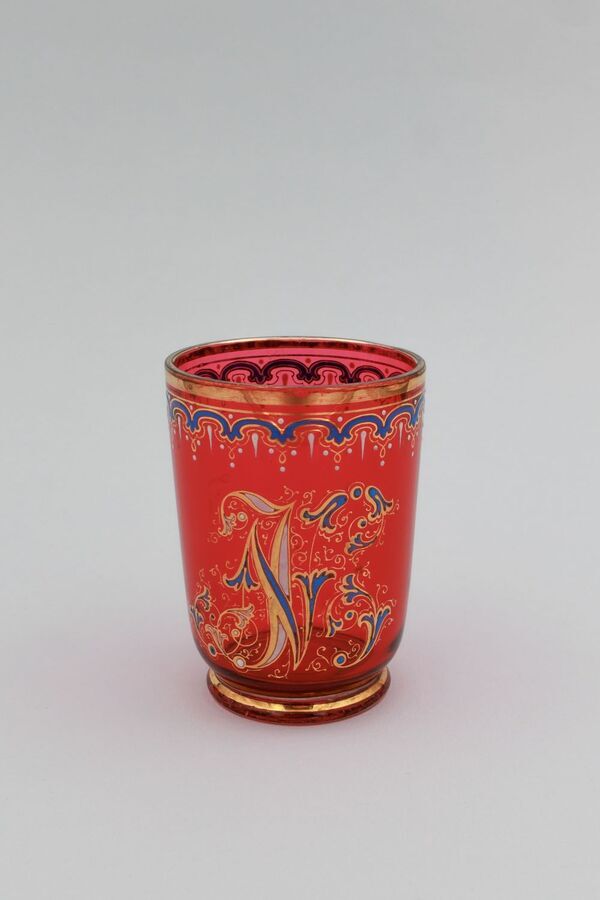
Чаша са иницијалима фабриканта Нацка Јанковића
Краљевина Србија око 1896.Јагодина, фабрика стакла Нацко Јанковић и синливено стакло у калупу, црвена лазуру, позлата, емајл, боје за стакловисина: 12,5 cmЗавичајни музеј Јагодина,...

Део сервиса Дрина (3 дела)
Краљевина Југославија, после 1928.Параћин, Српска фабрика стакла дувано стакло, брушеновисина: чаша за воду 22,8 cm; мала чаша 8,7 cm; чаша за вино 23,8 cmМузеј примењене уметности...
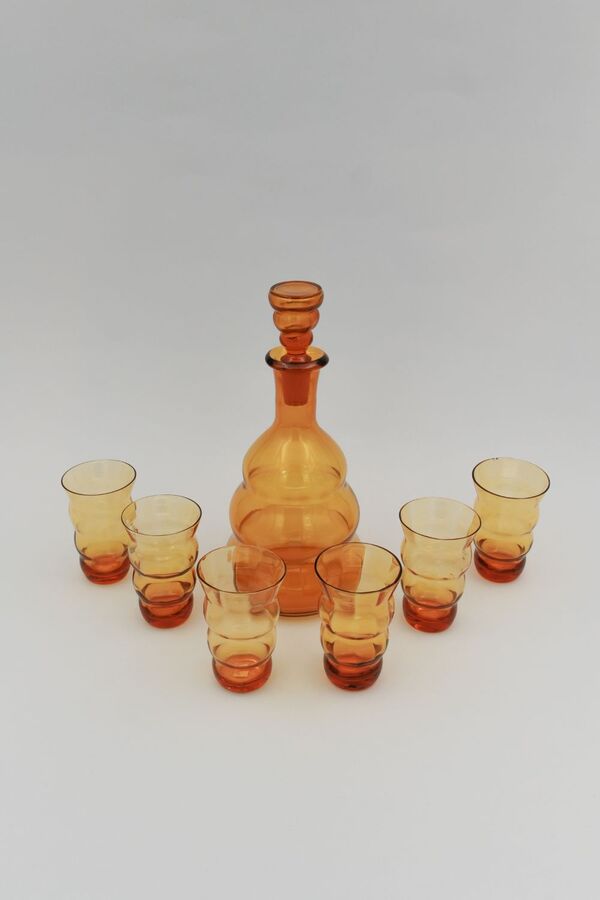
Сервис за ликер (8 делова)
Краљевина Југославија, око 1930.Параћин, Српска фабрика стакладувано стакло у бојивисина: боца 26 cm; чаше 9 cmЗавичајни музеј Параћин, инв.бр 741
Утилитарно стакло украшено везом од стаклених перли

Пехар-чаша
Средња Европа, средина 19. векавез, ручни рад Марије Стојковић из Београда, 1855.ливено стакло, стаклене перле, везвисина: 14 cmМузеј примењене уметности, инв. бр. 5088

Чаша за вино
Средња Европа, средина 19. векаливено стакло, стаклене перле, везвисина: 12,4 cmМузеј примењене уметности, инв.бр. 1083

Чаша за ликер
Средња Европа, средина 19. векаливено стакло, стаклене перле, везвисина: 12,7 cmМузеј примењене уметности, инв. бр. 889

Чутура
Аустријско царство, Чешка, средина 19. векадувано стакло, стаклене перле, везвисина: 17,5 cmМузеј примењене уметности, инв. бр. 6571
Употребно стакло за десерт и пиће

Тацна
Краљевина Србија, 1882–1890.Јагодина, Фабрика стакла Нацко Јанковић и синпресовано безбојно стакло, црвена бојапречник: 17,6 cmМузеј примењене уметности, инв. бр. 2285

Ваза за воће
Аустроугарска монархија, крај 19. векапресовано уранијумско такловисина: 18,3 cmМузеј примењене уметности, инв. бр. 13298

Сервис са иницијалима Б. Д.
Аустроугарска монархија, крај 19. векадувано стакло, гравирановисина: боца 30 cm; чаша за вино 9,5 cm; чаша за жестоко пиће 9,5 cmМузеј примењене уметности, инв. бр. 2341

Тацна за десерт
Аустроугарска монархија, крај 19. векапресовано плаво прозирно и опалско стакловисина: 17,2 cmМузеј примењене уметности, инв. бр. 21057

Мали бокал Краљевина Србија, 1882-1896.
Јагодина, фабрика стакла Нацко Јанковић и синдувано стакло у калупу, позлатависина: 12,7 cmМузеј града Београда, инв.бр.УПЕ 508

Мали бокал
Краљевина Србија, 1896.Јагодина, Фабрика стакла Нацко Јанковић и синзелено дувано стакло, боје, емајлвисина: 12,5 cmМузеј примењене уметности, инв. бр. 14325

Боца
Краљевина Србија, 1896.Јагодина, Фабрика стакла Нацко Јанковић и синзелено дувано стакло, боје, емајл, златoвисина: 14 cmМузеј примењене уметности, инв. бр. 15374

Боце за вино
Краљевина Србија, 1896.Јагодина, Фабрика стакла Нацко Јанковић и синзелено дувано стакло, боје, емајлвисина: 12 cmМузеј примењене уметности, инв. бр. 14324

Боца
Краљевина Србија, 1896–1900.Јагодина, Фабрика стакла Нацко Јанковић и синдувано стакло, боје, емајлвисина: 17 cmМузеј примењене уметности, инв. бр. 14328

Боца
Краљевина Србија, око 1900.Јагодина, Фабрика стакла Нацко Јанковић и синдувано стакло, боје, емајлвисина: 20 cmМузеј примењене уметности, инв. бр. 14327

Бокал
Краљевина Србија, око 1900.Јагодина, Фабрика стакла Нацко Јанковић и синдувано безбојно стакло, боје, емајлвисина: 27 cmМузеј примењене уметности, инв. бр. 12106

Чаша
Краљевина Србија, око 1900.Јагодина, Фабрика стакла Нацко Јанковић и синливено стакло, боје, емајлвисина: 12,4 cmМузеј примењене уметности, инв. бр. 21055

Чашице
Краљевина Србија, око 1900.Јагодина, Фабрика стакла Нацко Јанковић и синдувано стакло, бојевисина: 7,8 cmMузеј примењене уметности, инв. бр. 14335 (чаша инв.бр. 14322)

Део сервиса за пиће (3 дела)
Краљевина Србија, око 1900.Јагодина, Фабрика стакла Нацко Јанковић и синдувано стакло, боје, емајл, златовисина: боца 23 cm; чашица 7,5 cmМузеј примењене уметности, инв. бр. 21632
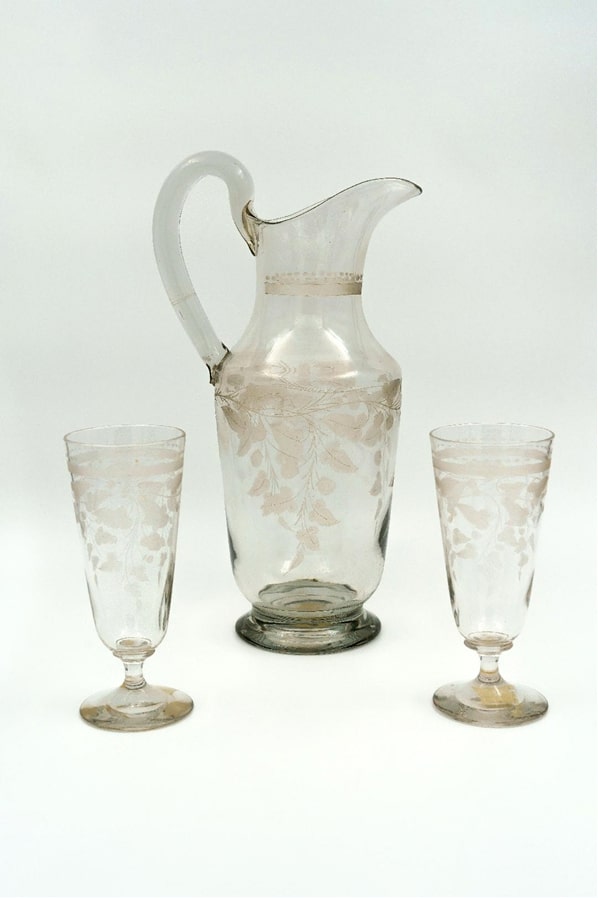
Сервис за пиће (6 делова)
Краљевина Србија, 1900-1904.Јагодина, Фабрика стакла Нацко Јанковић и синстакло дувано у калупу, гравирањевисина: бокал 34 cm; чаше 17 cmМузеј града Београда инв.бр. УПЕ 665, 667,...
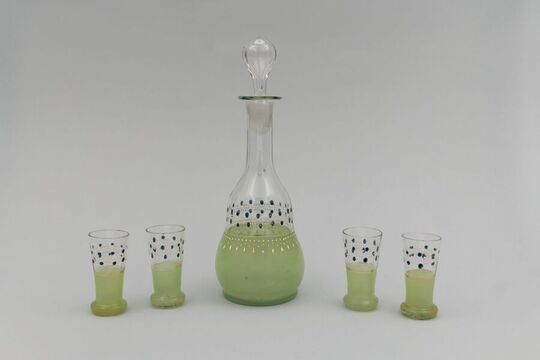
Сервис за ракију (6 делова)
Краљевина Србија, 1900-1904Јагодина, фабрика стакла Нацко Јанковић и синстакло дувано у калупу, емајл,боје,позлатависина: боца 22 cm; чаше 6 cmЗавични музеј Јагодина инв.бр.28
Бањске чаше и туристичко стакло

Туристички бокалчић
Краљевина Србија, 1882–1896.Јагодина, Фабрика стакла Нацко Јанковић и синплаво пресовано стакловисина: 8,5 cmМузеј примењене уметности, инв. бр. 21056

Бањска чаша
Краљевина Србија, почетак 20. векаЈагодина, Фабрика стакла Нацко Јанковић и син / Параћин, Српска фабрика стаклаливено стакло, боје, позлата, емајлвисина: 12 cmМузеј примењене умет...
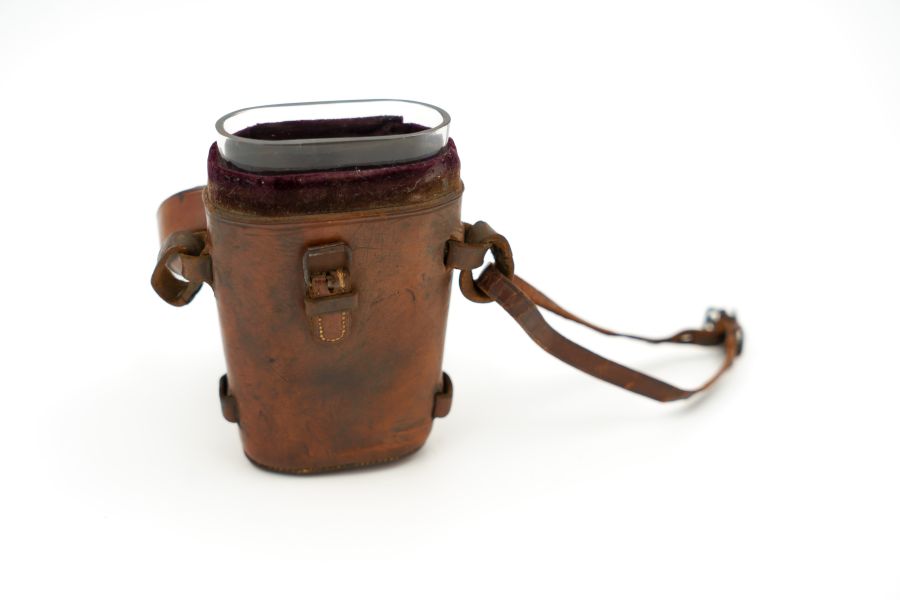
Бањска чаша
Краљевина Срба, Хрвата и Словенаца, око 1922.Параћин, Српска фабрика стаклаливено стакло, обрађена кожависина: 12,6 cmМузеј примењене уметности, инв. бр. 22575

Бањске чаше
Краљевина Југославија, 1929–1941.Хрватска, стаклара Осредекливено стакло, осликаноМузеј примењене уметности, инв. бр. 9229, 9230.
Кафанско стакло

Кафанске чаше
Краљевина Србија, до 1914.Параћин, Српска фабрика стакластакло ливено у калупу, шлифовановисина: чаша за вино 12 cm; чаша за коњак 8,5 cm; чаша за ракију 7,8 cmМузеј примењене умет...

Кафански бокал за ракију
Краљевина Србија, до 1914.Параћин, Српска фабрика стакластакло ливено у калупувисина: 18,3 cmМузеј примењене уметности, инв. бр. 5064

Боца
Краљевина Срба, Хрвата и Словенаца, 1922.Параћин, Српска фабрика стакладувано стакло, брушеновисина: 18 cmМузеј примењене уметности, инв. бр. 5081

Боце за вино
Краљевина Југославија, 1928–1945.Параћин, Српска фабрика стакладувано стакло у калупу, брушеновисина: 21,7 cmМузеј примењене уметности, инв. бр. 11229, 22310
Декоративно стакло

Ваза за цвеће
Краљевина Југославија, 1929–1945.Параћин, Српска фабрика стакладувано стакло, брушеновисина: 40 cmМузеј примењене уметности, инв. бр. 6586
Боце за наргиле

Боца за наргилу
Кнежевина Србија, око 1850.Црни врх, Мануфактура Аврама Петронијевићадувано стакло, црвена лазура, златна паста, емајл, бојевисина: 24,5 cmМузеј примењене уметности, инв. бр. 5082

Боца за наргилу
Аустроугарска монархија, Чешка, крај 19. векаливено стакло, брушено, црвена лазура, емајлвисина: 24 cmМузеј примењене уметности, инв. бр. 5079

Наргила
Краљевина Срба, Хрвата и Словенаца, око 1920.рам: радионица са територије Боснедрво, метал, сребро, инкрустрација, токарење, хартија, свила, стаклене перле, везстаклена кугла: Чехослова...
Утилитарно и репрезентативно: стакло у дворској и репрезентативној култури
У односу на грађанску културу, дворска и државна репрезентативна култура биле су окренуте увозном, искључиво луксузном стаклу. Угледајући се на модерне светске центре моћи, и у уређењу државно-владарских простора нужно се тежило истим идеалима у политици репрезентације. Преузимањем устаљених репрезентативних модела у уређењу дворских и државничких простора преузимала се и уметност обликованог стакла. Владарске репрезентације моћи подразумевају и употребно и луксузно стакло. Најзначајније уметничке фирме луксузног стакла бивају ангажованe за репрезентативне објекте у Србији још од 19.века. Од владавине кнеза Милоша Обреновића па све до периода социјализма и владавине Јосипа Броза Тита готово исте фирме, попут „Лобмајера” и „Мозера”, испоручују своје производе за потребе опремања репрезентативних здања употребним и блештавим творевинама од стакла. Будући да су те фирме биле ангажоване и за европске дворове и председничке палате, њихово присуство је било пожељно и у репрезентативним просторима Србије односно Југославије. Део тог луксузног стакла који је сачуван до данас био је део владарске репрезентације и представљао је једну врсту фрагилног амблема простора моћи, садржао је државне и династичке симболе. Највећи сегмент репрезентативног употребног стакла потиче из времена династије Обреновић. Само захваљујући аукцијама након смена династија стакло је преживело ратна дејства и потом ушло у музејске колекције путем откупа. Насупрот томе, предмети последње југословенске династије сачувани су у траговима. Током Првог и Другог светског рата стакло нестаје у ратним разарањима. Чини се да је део употребног луксузног стакла Двора Краљевине Југославије постао део репрезентативних простора нове државе после Другог светског рата. Након формирања Кабинета председника ФНРЈ 1953. године, на основу сачуваних стаклених сервиса са дорадама у декорацији, увиђамо да је и нова држава имала јасну идеју о коришћењу луксузног употребног стакла у маркирањима најзначајнијих простора државе.
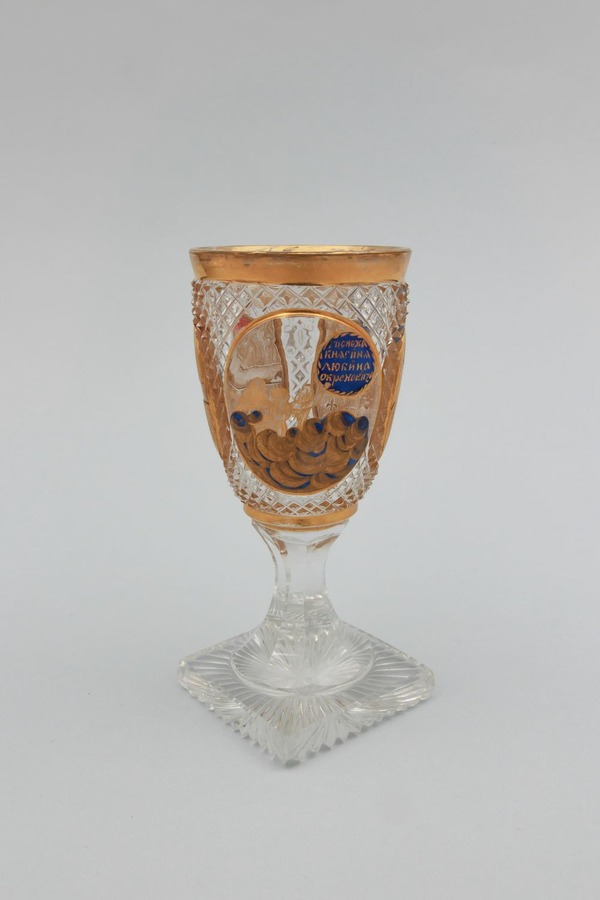
Пехар-чаша кнегиње Љубице Обреновић
Аустријско царство, око 1820.кристално ливено стакло, злато, кобалт, емајл;брушење, гравирање, осликавањевисина: 13 cmМузеј града Београда, инв. бр. УПЕ 279

Део сервиса кнеза Михаила Обреновића
Аустријско царство, Беч, око 1840.вишеслојно дувано стакло у калупу, сечено, злато, боје, емајлвисина: бокала 30 cm; чаше: 12 cmМузеј у Смедереву, инв.бр ИУ-ПУ-63
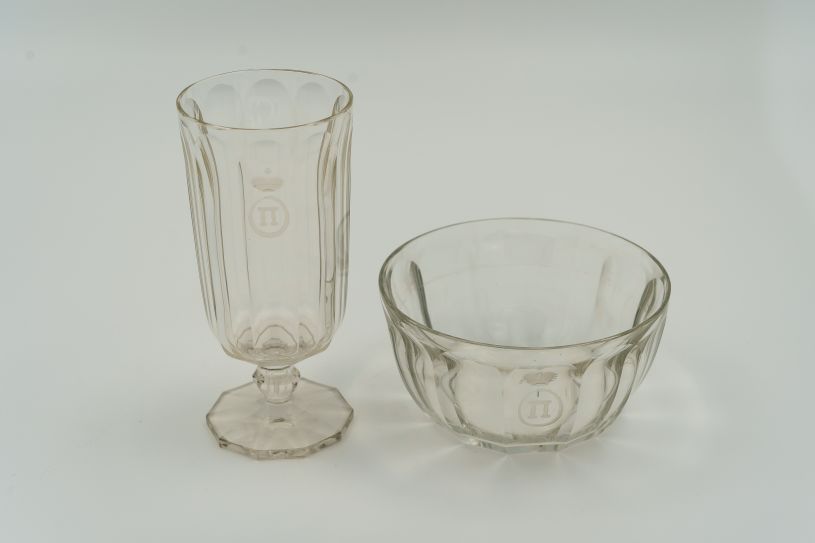
Сервис са монограмом Петрије Обреновић (2 дела)
Аустроугарска монархија, око 1860.Беч, Лобмајер (J. & L. Lobmeyr)кристално стакло, гравирановисина: чинија 13,3 cm; чаша 16 cmИсторијски музеј Србије, инв. бр. Р 390, инв. бр. Р 38...

Пехар-чаша са грбом Кнежевине Србије
Аустријско царство, око 1860.ливено кристално стакло, брушено, гравирановисина: 13 cmИсторијски музеј Србије, инв. бр. 112/659

Бокал за вино (2 дела)
Средња Европа (Аустроугарска монархија), последња трећина 19. векастакло дувано, брушено; сребрни оков и дршкависина: 37,4 cmДворски комплекс на Дедињу
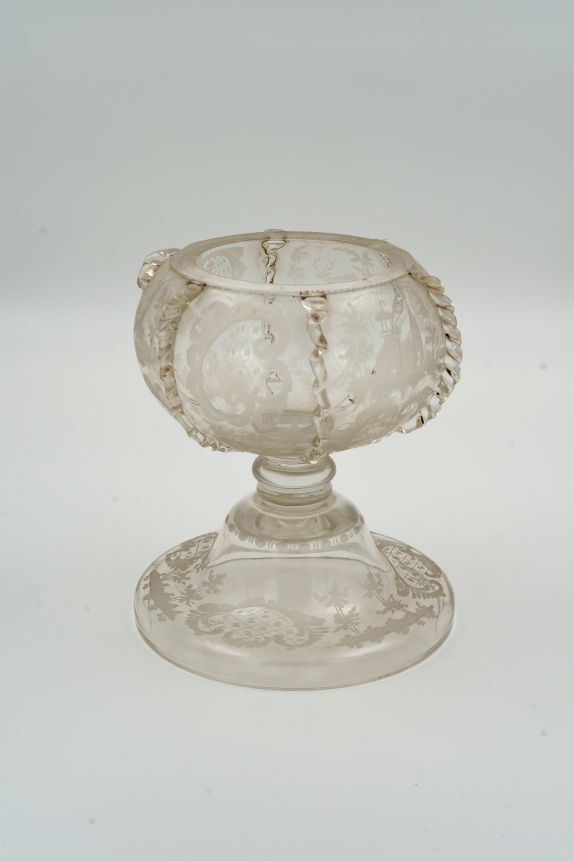
Пехар-ваза
Аустроугарска монархијаБеч, последња трећина 19. векадувано стакло у калупу, гравирањевисина: 17 cmУправа за заједничке послове републичких органа, Република Србија, вилa Златни бр...

Пехар са портретом принца Александра Обреновића
Аустроугарска монархија, Чешка, око 1880.кристално, ливено, брушено стакло, емајл, осликани портрет, боје, златовисина: 38,3 cmМузеј града Београда, инв. бр. УПЕ 167

Део из сервиса двора Кнежевине Србије
Аустроугарска, 1880.Беч, Уметничка радионица Лобмајервисина: чинија са тацном 7,8 cm; чаша 15,5 cm; чаша 13 cmИсторијски музеј Србије, инв.бр. Р 199/2380, Р 110/657, Р 111/658
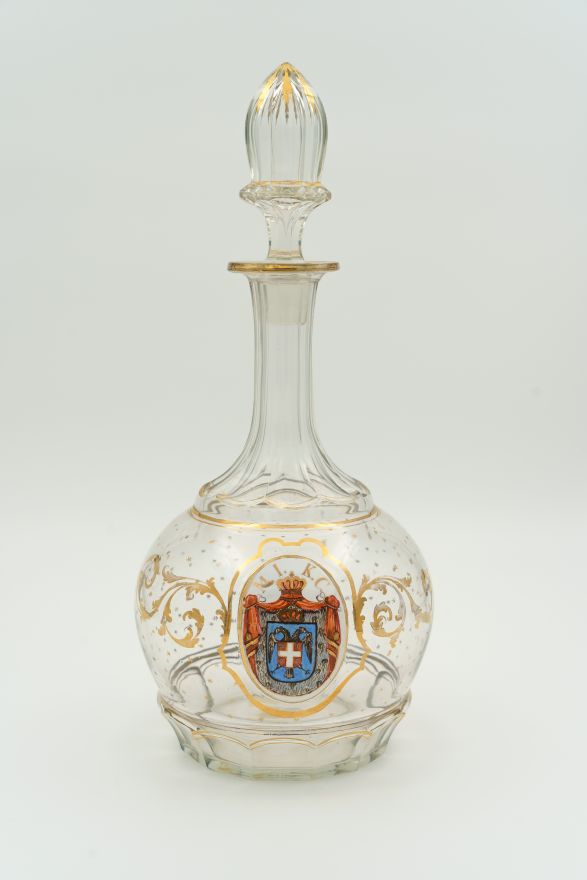
Боца са монограмом краља Милана
Аустроугарска монархија, после 1882.кристално стакло, дувано у калупу, брушено, боје, емајл, позлатависина: 28 cmИсторијски музеј Србије, инв. бр. Р 109-656

Делови сервис за пиће из двора Александра I Обреновића (20 делова)
Аустроугарска монархија, крај 19. векаПрва мађарска фабрика стакла (Első magyar üveggyár)Дувано у калупу, брушено кристално стакло, посребрењебокал: висина 29 cmМузеј града Београд...

Бокал за вино
Француска, Париз, крај 19. векастакло дувано у калупу, брушено, гравирано; сребрни оков, дршка, постоље, мајсторФердинанд Арпин (Ferdinand Arpin)висина: 29,5 cmЗбирка Дворског комп...

Бокал са угравираним грбом ФНРЈ (4 предмета)
Аустроугарска монархија, последња трећина 19. векаБеч, Клинкош (J. C. Klinkosch)кристално стакло дувано у калупу, брушено, гравирано; сребрни, позлаћени оков и дршкависина: 42,2 cm...

Чаше с монограмом Александра I Обреновића (2 дела)
Аустроугарска монархија, крај 19. векаливено стакло, гравирановисина: 14,3 cmМузеј примењене уметности, инв. бр. 23276

Бокал за вино
Немачко царство, крај 19. векастакло дувано у калупу, гравирано, просребрен оковвисина: 33 cmДворски комплекс на Дедињу

Сет са свећњацима и посудом за слаткише (3 дела)
Италија, Венеција, око 1900.декорација: према мануфактури Салвијати (Salviati) извео Мозер (Moser)плаво, дувано стакло; сликано, емајл, боје, златна пастависина: свећнаци 33 cm; посуда...

Ваза
Аустроугарска монархија, почетак 20. векаБеч, Клинкош (J. C. Klinkosch)ливено кобалт-плаво стакло, сребрни оковвисина: 32 cmДворски комплекс на Дедињу

Сервис за пиће двора Александра I Обреновић (10 делова)
Аустроугарска монархија, крај 19. почетак 20.векадувано стакло у калупу, шлифовано и гравирановисина: 36,5 cmМузеј града Београда, инв. бр. УПЕ 142, 192, 193, 194, 195, 197

Сервис Папа (17 делова)
Чехословачка, од 1916.Карлове Вари, Мозер, према нацрту Леа Мозеракристално, ливено, брушено стакловисина: боце(5) 30 cm; чаше за ликер(11) 14,5 cm; чашица 12 cmРепублика Србија, У...
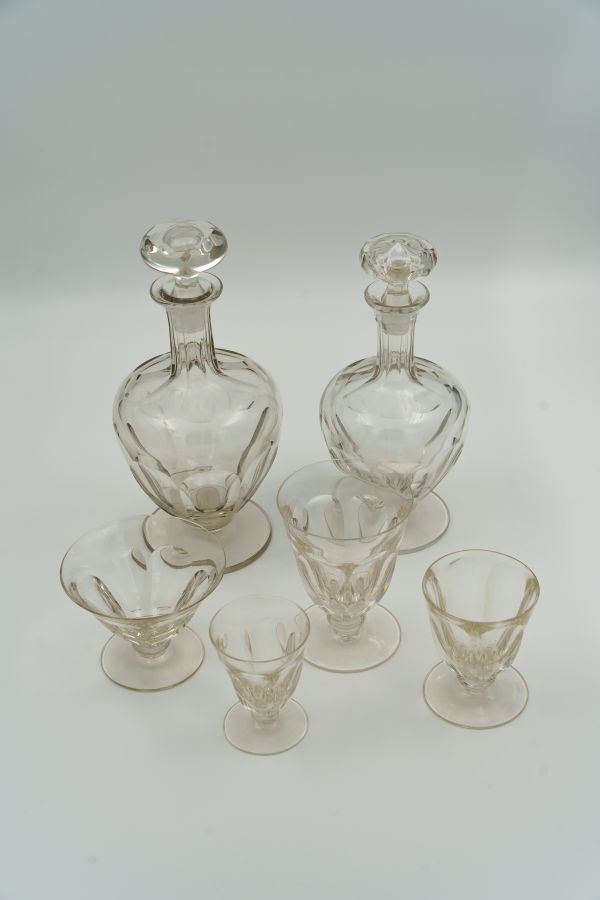
Сервис Пит (31 део)
Чехословачка, од 1920.Карлове Вари, Мозер (Moser), према нацрту Леа Мозеракристално, ливено, брушено стакловисина: боце(7) 24,5 cm; боца(1) 27,5 cm; чаше за воду(7) 12 cm; чаше за жесто...
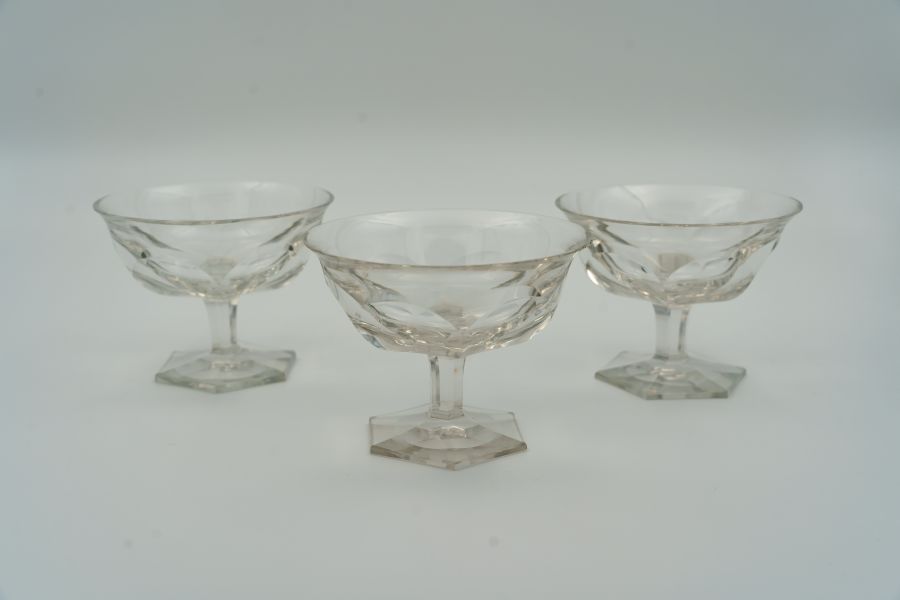
Адел Меликоф сервис (12 предмета)
Чехословачка, од 1922.Карлове Вари, Мозер, према нацрту Леа Мозеракристално, брушено стакловисина: чаше за сладолед 8 cmРепублика Србија, Управа за заједничке послове републичких о...

Ваза из серије Фипоп (Fipop)
Чехословачка, 1919–1922.Карлове Вари, Мозер (Moser), према нацрту Леа Мозера (Leo Moser)зелено ливено стакло, брушено; позлаћена, патинирана трака с гравираним фигурама кентаурависина:...

Чаша-пехар
Средња Европа (Немачка или Чехословачка), 1920–1940.ливено, кристално двослојно стакло, брушено, гравирановисина: 22 cmДворски комплекс на Дедињу

Чаша-пехар
Средња Европа (Немачка или Чехословачка), 1920–1940.ливено, брушено, двослојно кристално стакло, гравирановисина: 23 cmЗбирка Дворског комплекса на Дедињу
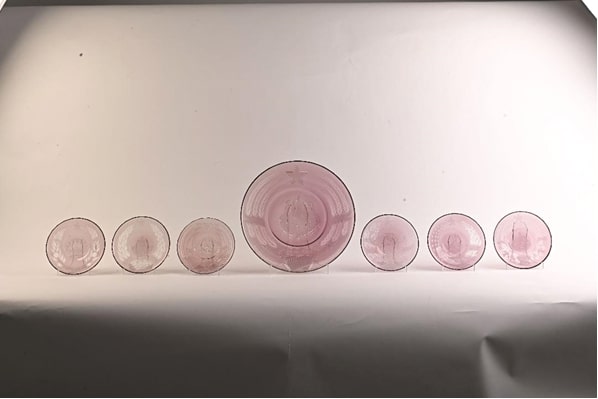
Сервис са државним грбом СФРЈ и грбовима република, поклон Јосипу Брозу Титу од СФС (7 делова)
Социјалистичка Федеративна Република Југославија, 1966.Параћин, Српска фабрика стакла (СФС)бојено стакло, брушено, ецовано, гравиранопречник: овал 40 cm; десертне тацне 20 cmМузеј...

Део сервиса за пиће
Аустрија, око 1970. БечУметничка радионица Лобмајердувано и гравирано стакловисина: чаша за штампање 21,5cm; чаша за вино 15,5cmЗбирка Дворског комплекса на Дедињу
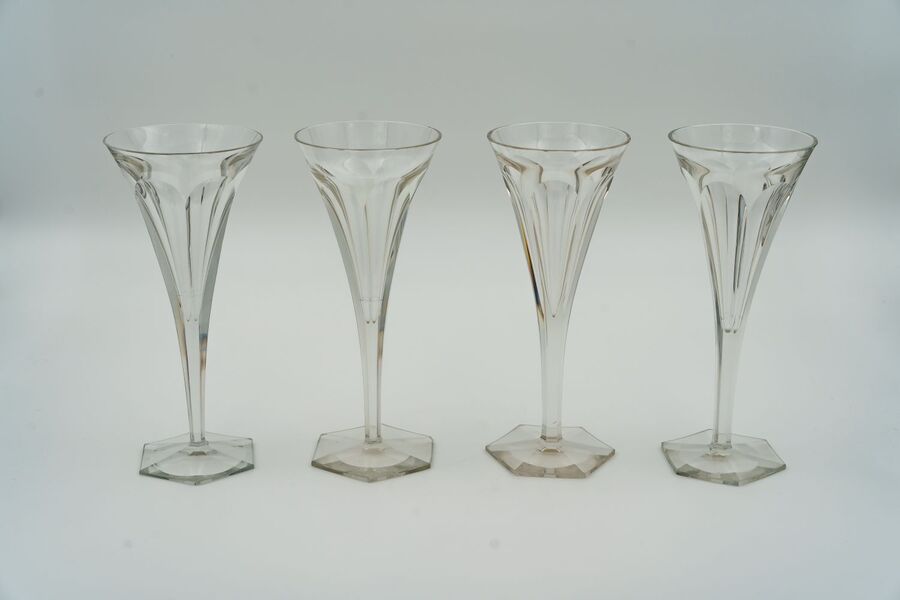
Јубиларни сервис
Чехословачка, око 1970.Карлови вари, Мозеркристално резано, стакловисина: 21,5 cmУправа за заједничке послове Републике Србије, Вила златни брег
У средини српског културног круга уметност обликованог стакла била је суштински везана за грађанску културу, док се обично индустријско и амбалажно стакло могло наћи у широким друштвеним круговима. Током 19.века уметност и визуелна култура имали су значајну улогу у приватном животу у изградњи нациналног идентитета. Полазећи од државних и националних идеолошких утицаја у друштву, користећи визуелно прихватљиве моделе украшавања у декорацији стакла, користе се хералдички мотиви, представе с патриотском тематиком, портрети припадника националног интелектуалног пантеона, националних хероја. Уређење домова, опремање домаћинстава артифицинираним и луксузним предметима било је подређено актуелним културним обрасцима. У првој половини 20.века утицаји југословенских идеја и новонастала културна клима имали су јак утицај на развој производње али и на декорацију употребног стакла.

Чаша са грбом Кнежевине Србије

Чаша са грбом Кнежевине Србије

Чаша са грбом Кнежевине Србије

Чаша са грбом Кнежевине Србије

Чаша са грбом Кнежевине Србије

Чаша-пехар са грбом Кнежевине Србије

Чаша за жестоко пиће са грбом Краљевине Србије

Бокал и чаша

Бокал с представом Стефана Првовенчаног

Пехари Косте Средојевића (са грбом Краљевине Србије и портретом црногорског кнеза Николе Петровића)

Део сервиса за жестоко пиће са грбом Краљевине Србије

Чаша са портретом Бранка Радичевића

Чаша с портретом црногорског владике Његоша Петровића

Чаша с портретом кнегиње Јулије Обреновић

Чаша са дуплим портретом краља Александра и краљице Драге Обреновић
Стакло у свакодневници
У примењеној уметности стакла грађанске свакодневнице чини се ипак да су најзаступљенији били предмети који су имали допадљиве облике и декорацију. Слично увозном брушеном кристалу, двослојном и опалном стаклу, дуваном бојеном и пресованом стаклу, у српској грађанској култури појављује се стакло домаће производње које је по својим облицима начелно имало улогу да задовољи лични укус појединца. Тако обликовано стакло естетски утемељено на централноевропским стилским изворима било је део свакодневних ритуала, културе стола о конзумирања пића и хране. Најразличитији облици стакла били су нека врста маркера савремених трендова и покушаја у означавању припадника истог културног миљеа и друштвеног слоја који деле исте вредности, без обзира на националне и државне границе. Окренути дому, породици и својим личним амбицијама, припадници грађанства тежили су да се представе као равни оним круговима у свету којима могу да парирају по богатству, интелектуалном и културном нивоу.

Пехар-чаша
Кнежевина Србија, око 1846.Црни врх, Стаклара Аврама Петронијевићаливено безбојно стакло, гравирање, трагови позлатевисина: 14,5 cmМузеј примењене уметности, инв. бр. 5091

Делови различитих сервиса за ракију (5 делова)
Кнежевина Србија, око 1850.Црни врх, Стаклара Аврама Петронијевићадувано стакло, црвена лазура, емајлвисина: чашице за ракију 8-9 cm; боца 18,5 cmMузеј примењене уметности, инв. бр...

Чиније за слаткo (5 делова)
Кнежевина Србија, око 1850.Црни врх, Стаклара Аврама Петронијевићастакло ливено, црвена лазура, емајлвисина: 7,1 cmМузеј примењене уметности, инв. бр. 23282

Тацна за десерт
Кнежевина Србија, око 1850.Црни врх, Стаклара Аврама Петронијевићаливено стакло, црвена лазура, емајл, златна бојависина: 1,5 cmпречник: 15,1 cmМузеј примењене уметности, инв....

Новчић чаша са иницијалима А. К.
Кнежевина Србија, око 1850.Црни врх, Стаклара Аврама Петронијевићаливено стакло у калупу, гравирање, 20 аустријских крајцара из 1844. годиневисина: 11,2 cmМузеј примењене уметности...

Чаша са иницијалима Ј. К.
Кнежевина Србија, око 1850.Црни врх, Стаклара Аврама Петронијевићаливено безбојно стакло, гравирањевисина: 11,7 cmМузеј примењене уметности, инв. бр. 7585

Чашица из заоставштине Томе Вучић Перишића
Кнежевина Србија, око 1850.Црни Врх, Стаклара Аврама Петронијевићаливено безбојно стакло, гравирано, трагови позлатевисина: 7,9 cm Историјски музеј Србије, инв.бр. Р 221/4517

Бокал
Турско царство, последња трећина 19. векадувано ручно моделовано стакло, брушено, златна бојависина: 12 cmМузеј примењене уметности, инв. бр. 7583

Чаша са иницијалима фабриканта Нацка Јанковића
Краљевина Србија око 1896.Јагодина, фабрика стакла Нацко Јанковић и синливено стакло у калупу, црвена лазуру, позлата, емајл, боје за стакловисина: 12,5 cmЗавичајни музеј Јагодина,...

Део сервиса Дрина (3 дела)
Краљевина Југославија, после 1928.Параћин, Српска фабрика стакла дувано стакло, брушеновисина: чаша за воду 22,8 cm; мала чаша 8,7 cm; чаша за вино 23,8 cmМузеј примењене уметности...

Сервис за ликер (8 делова)
Краљевина Југославија, око 1930.Параћин, Српска фабрика стакладувано стакло у бојивисина: боца 26 cm; чаше 9 cmЗавичајни музеј Параћин, инв.бр 741
Утилитарно стакло украшено везом од стаклених перли

Пехар-чаша
Средња Европа, средина 19. векавез, ручни рад Марије Стојковић из Београда, 1855.ливено стакло, стаклене перле, везвисина: 14 cmМузеј примењене уметности, инв. бр. 5088

Чаша за вино
Средња Европа, средина 19. векаливено стакло, стаклене перле, везвисина: 12,4 cmМузеј примењене уметности, инв.бр. 1083

Чаша за ликер
Средња Европа, средина 19. векаливено стакло, стаклене перле, везвисина: 12,7 cmМузеј примењене уметности, инв. бр. 889

Чутура
Аустријско царство, Чешка, средина 19. векадувано стакло, стаклене перле, везвисина: 17,5 cmМузеј примењене уметности, инв. бр. 6571
Употребно стакло за десерт и пиће

Тацна
Краљевина Србија, 1882–1890.Јагодина, Фабрика стакла Нацко Јанковић и синпресовано безбојно стакло, црвена бојапречник: 17,6 cmМузеј примењене уметности, инв. бр. 2285

Ваза за воће
Аустроугарска монархија, крај 19. векапресовано уранијумско такловисина: 18,3 cmМузеј примењене уметности, инв. бр. 13298

Сервис са иницијалима Б. Д.
Аустроугарска монархија, крај 19. векадувано стакло, гравирановисина: боца 30 cm; чаша за вино 9,5 cm; чаша за жестоко пиће 9,5 cmМузеј примењене уметности, инв. бр. 2341

Тацна за десерт
Аустроугарска монархија, крај 19. векапресовано плаво прозирно и опалско стакловисина: 17,2 cmМузеј примењене уметности, инв. бр. 21057

Мали бокал Краљевина Србија, 1882-1896.
Јагодина, фабрика стакла Нацко Јанковић и синдувано стакло у калупу, позлатависина: 12,7 cmМузеј града Београда, инв.бр.УПЕ 508

Мали бокал
Краљевина Србија, 1896.Јагодина, Фабрика стакла Нацко Јанковић и синзелено дувано стакло, боје, емајлвисина: 12,5 cmМузеј примењене уметности, инв. бр. 14325

Боца
Краљевина Србија, 1896.Јагодина, Фабрика стакла Нацко Јанковић и синзелено дувано стакло, боје, емајл, златoвисина: 14 cmМузеј примењене уметности, инв. бр. 15374

Боце за вино
Краљевина Србија, 1896.Јагодина, Фабрика стакла Нацко Јанковић и синзелено дувано стакло, боје, емајлвисина: 12 cmМузеј примењене уметности, инв. бр. 14324

Боца
Краљевина Србија, 1896–1900.Јагодина, Фабрика стакла Нацко Јанковић и синдувано стакло, боје, емајлвисина: 17 cmМузеј примењене уметности, инв. бр. 14328

Боца
Краљевина Србија, око 1900.Јагодина, Фабрика стакла Нацко Јанковић и синдувано стакло, боје, емајлвисина: 20 cmМузеј примењене уметности, инв. бр. 14327

Бокал
Краљевина Србија, око 1900.Јагодина, Фабрика стакла Нацко Јанковић и синдувано безбојно стакло, боје, емајлвисина: 27 cmМузеј примењене уметности, инв. бр. 12106

Чаша
Краљевина Србија, око 1900.Јагодина, Фабрика стакла Нацко Јанковић и синливено стакло, боје, емајлвисина: 12,4 cmМузеј примењене уметности, инв. бр. 21055

Чашице
Краљевина Србија, око 1900.Јагодина, Фабрика стакла Нацко Јанковић и синдувано стакло, бојевисина: 7,8 cmMузеј примењене уметности, инв. бр. 14335 (чаша инв.бр. 14322)

Део сервиса за пиће (3 дела)
Краљевина Србија, око 1900.Јагодина, Фабрика стакла Нацко Јанковић и синдувано стакло, боје, емајл, златовисина: боца 23 cm; чашица 7,5 cmМузеј примењене уметности, инв. бр. 21632

Сервис за пиће (6 делова)
Краљевина Србија, 1900-1904.Јагодина, Фабрика стакла Нацко Јанковић и синстакло дувано у калупу, гравирањевисина: бокал 34 cm; чаше 17 cmМузеј града Београда инв.бр. УПЕ 665, 667,...

Сервис за ракију (6 делова)
Краљевина Србија, 1900-1904Јагодина, фабрика стакла Нацко Јанковић и синстакло дувано у калупу, емајл,боје,позлатависина: боца 22 cm; чаше 6 cmЗавични музеј Јагодина инв.бр.28
Бањске чаше и туристичко стакло

Туристички бокалчић
Краљевина Србија, 1882–1896.Јагодина, Фабрика стакла Нацко Јанковић и синплаво пресовано стакловисина: 8,5 cmМузеј примењене уметности, инв. бр. 21056

Бањска чаша
Краљевина Србија, почетак 20. векаЈагодина, Фабрика стакла Нацко Јанковић и син / Параћин, Српска фабрика стаклаливено стакло, боје, позлата, емајлвисина: 12 cmМузеј примењене умет...

Бањска чаша
Краљевина Срба, Хрвата и Словенаца, око 1922.Параћин, Српска фабрика стаклаливено стакло, обрађена кожависина: 12,6 cmМузеј примењене уметности, инв. бр. 22575

Бањске чаше
Краљевина Југославија, 1929–1941.Хрватска, стаклара Осредекливено стакло, осликаноМузеј примењене уметности, инв. бр. 9229, 9230.
Кафанско стакло

Кафанске чаше
Краљевина Србија, до 1914.Параћин, Српска фабрика стакластакло ливено у калупу, шлифовановисина: чаша за вино 12 cm; чаша за коњак 8,5 cm; чаша за ракију 7,8 cmМузеј примењене умет...

Кафански бокал за ракију
Краљевина Србија, до 1914.Параћин, Српска фабрика стакластакло ливено у калупувисина: 18,3 cmМузеј примењене уметности, инв. бр. 5064

Боца
Краљевина Срба, Хрвата и Словенаца, 1922.Параћин, Српска фабрика стакладувано стакло, брушеновисина: 18 cmМузеј примењене уметности, инв. бр. 5081

Боце за вино
Краљевина Југославија, 1928–1945.Параћин, Српска фабрика стакладувано стакло у калупу, брушеновисина: 21,7 cmМузеј примењене уметности, инв. бр. 11229, 22310
Декоративно стакло

Ваза за цвеће
Краљевина Југославија, 1929–1945.Параћин, Српска фабрика стакладувано стакло, брушеновисина: 40 cmМузеј примењене уметности, инв. бр. 6586
Боце за наргиле

Боца за наргилу
Кнежевина Србија, око 1850.Црни врх, Мануфактура Аврама Петронијевићадувано стакло, црвена лазура, златна паста, емајл, бојевисина: 24,5 cmМузеј примењене уметности, инв. бр. 5082

Боца за наргилу
Аустроугарска монархија, Чешка, крај 19. векаливено стакло, брушено, црвена лазура, емајлвисина: 24 cmМузеј примењене уметности, инв. бр. 5079

Наргила
Краљевина Срба, Хрвата и Словенаца, око 1920.рам: радионица са територије Боснедрво, метал, сребро, инкрустрација, токарење, хартија, свила, стаклене перле, везстаклена кугла: Чехослова...
Утилитарно и репрезентативно: стакло у дворској и репрезентативној култури
У односу на грађанску културу, дворска и државна репрезентативна култура биле су окренуте увозном, искључиво луксузном стаклу. Угледајући се на модерне светске центре моћи, и у уређењу државно-владарских простора нужно се тежило истим идеалима у политици репрезентације. Преузимањем устаљених репрезентативних модела у уређењу дворских и државничких простора преузимала се и уметност обликованог стакла. Владарске репрезентације моћи подразумевају и употребно и луксузно стакло. Најзначајније уметничке фирме луксузног стакла бивају ангажованe за репрезентативне објекте у Србији још од 19.века. Од владавине кнеза Милоша Обреновића па све до периода социјализма и владавине Јосипа Броза Тита готово исте фирме, попут „Лобмајера” и „Мозера”, испоручују своје производе за потребе опремања репрезентативних здања употребним и блештавим творевинама од стакла. Будући да су те фирме биле ангажоване и за европске дворове и председничке палате, њихово присуство је било пожељно и у репрезентативним просторима Србије односно Југославије. Део тог луксузног стакла који је сачуван до данас био је део владарске репрезентације и представљао је једну врсту фрагилног амблема простора моћи, садржао је државне и династичке симболе. Највећи сегмент репрезентативног употребног стакла потиче из времена династије Обреновић. Само захваљујући аукцијама након смена династија стакло је преживело ратна дејства и потом ушло у музејске колекције путем откупа. Насупрот томе, предмети последње југословенске династије сачувани су у траговима. Током Првог и Другог светског рата стакло нестаје у ратним разарањима. Чини се да је део употребног луксузног стакла Двора Краљевине Југославије постао део репрезентативних простора нове државе после Другог светског рата. Након формирања Кабинета председника ФНРЈ 1953. године, на основу сачуваних стаклених сервиса са дорадама у декорацији, увиђамо да је и нова држава имала јасну идеју о коришћењу луксузног употребног стакла у маркирањима најзначајнијих простора државе.

Пехар-чаша кнегиње Љубице Обреновић
Аустријско царство, око 1820.кристално ливено стакло, злато, кобалт, емајл;брушење, гравирање, осликавањевисина: 13 cmМузеј града Београда, инв. бр. УПЕ 279

Део сервиса кнеза Михаила Обреновића
Аустријско царство, Беч, око 1840.вишеслојно дувано стакло у калупу, сечено, злато, боје, емајлвисина: бокала 30 cm; чаше: 12 cmМузеј у Смедереву, инв.бр ИУ-ПУ-63

Сервис са монограмом Петрије Обреновић (2 дела)
Аустроугарска монархија, око 1860.Беч, Лобмајер (J. & L. Lobmeyr)кристално стакло, гравирановисина: чинија 13,3 cm; чаша 16 cmИсторијски музеј Србије, инв. бр. Р 390, инв. бр. Р 38...

Пехар-чаша са грбом Кнежевине Србије
Аустријско царство, око 1860.ливено кристално стакло, брушено, гравирановисина: 13 cmИсторијски музеј Србије, инв. бр. 112/659

Бокал за вино (2 дела)
Средња Европа (Аустроугарска монархија), последња трећина 19. векастакло дувано, брушено; сребрни оков и дршкависина: 37,4 cmДворски комплекс на Дедињу

Пехар-ваза
Аустроугарска монархијаБеч, последња трећина 19. векадувано стакло у калупу, гравирањевисина: 17 cmУправа за заједничке послове републичких органа, Република Србија, вилa Златни бр...

Пехар са портретом принца Александра Обреновића
Аустроугарска монархија, Чешка, око 1880.кристално, ливено, брушено стакло, емајл, осликани портрет, боје, златовисина: 38,3 cmМузеј града Београда, инв. бр. УПЕ 167

Део из сервиса двора Кнежевине Србије
Аустроугарска, 1880.Беч, Уметничка радионица Лобмајервисина: чинија са тацном 7,8 cm; чаша 15,5 cm; чаша 13 cmИсторијски музеј Србије, инв.бр. Р 199/2380, Р 110/657, Р 111/658

Боца са монограмом краља Милана
Аустроугарска монархија, после 1882.кристално стакло, дувано у калупу, брушено, боје, емајл, позлатависина: 28 cmИсторијски музеј Србије, инв. бр. Р 109-656

Делови сервис за пиће из двора Александра I Обреновића (20 делова)
Аустроугарска монархија, крај 19. векаПрва мађарска фабрика стакла (Első magyar üveggyár)Дувано у калупу, брушено кристално стакло, посребрењебокал: висина 29 cmМузеј града Београд...

Бокал за вино
Француска, Париз, крај 19. векастакло дувано у калупу, брушено, гравирано; сребрни оков, дршка, постоље, мајсторФердинанд Арпин (Ferdinand Arpin)висина: 29,5 cmЗбирка Дворског комп...

Бокал са угравираним грбом ФНРЈ (4 предмета)
Аустроугарска монархија, последња трећина 19. векаБеч, Клинкош (J. C. Klinkosch)кристално стакло дувано у калупу, брушено, гравирано; сребрни, позлаћени оков и дршкависина: 42,2 cm...

Чаше с монограмом Александра I Обреновића (2 дела)
Аустроугарска монархија, крај 19. векаливено стакло, гравирановисина: 14,3 cmМузеј примењене уметности, инв. бр. 23276

Бокал за вино
Немачко царство, крај 19. векастакло дувано у калупу, гравирано, просребрен оковвисина: 33 cmДворски комплекс на Дедињу

Сет са свећњацима и посудом за слаткише (3 дела)
Италија, Венеција, око 1900.декорација: према мануфактури Салвијати (Salviati) извео Мозер (Moser)плаво, дувано стакло; сликано, емајл, боје, златна пастависина: свећнаци 33 cm; посуда...

Ваза
Аустроугарска монархија, почетак 20. векаБеч, Клинкош (J. C. Klinkosch)ливено кобалт-плаво стакло, сребрни оковвисина: 32 cmДворски комплекс на Дедињу

Сервис за пиће двора Александра I Обреновић (10 делова)
Аустроугарска монархија, крај 19. почетак 20.векадувано стакло у калупу, шлифовано и гравирановисина: 36,5 cmМузеј града Београда, инв. бр. УПЕ 142, 192, 193, 194, 195, 197

Сервис Папа (17 делова)
Чехословачка, од 1916.Карлове Вари, Мозер, према нацрту Леа Мозеракристално, ливено, брушено стакловисина: боце(5) 30 cm; чаше за ликер(11) 14,5 cm; чашица 12 cmРепублика Србија, У...

Сервис Пит (31 део)
Чехословачка, од 1920.Карлове Вари, Мозер (Moser), према нацрту Леа Мозеракристално, ливено, брушено стакловисина: боце(7) 24,5 cm; боца(1) 27,5 cm; чаше за воду(7) 12 cm; чаше за жесто...

Адел Меликоф сервис (12 предмета)
Чехословачка, од 1922.Карлове Вари, Мозер, према нацрту Леа Мозеракристално, брушено стакловисина: чаше за сладолед 8 cmРепублика Србија, Управа за заједничке послове републичких о...

Ваза из серије Фипоп (Fipop)
Чехословачка, 1919–1922.Карлове Вари, Мозер (Moser), према нацрту Леа Мозера (Leo Moser)зелено ливено стакло, брушено; позлаћена, патинирана трака с гравираним фигурама кентаурависина:...

Чаша-пехар
Средња Европа (Немачка или Чехословачка), 1920–1940.ливено, кристално двослојно стакло, брушено, гравирановисина: 22 cmДворски комплекс на Дедињу

Чаша-пехар
Средња Европа (Немачка или Чехословачка), 1920–1940.ливено, брушено, двослојно кристално стакло, гравирановисина: 23 cmЗбирка Дворског комплекса на Дедињу

Сервис са државним грбом СФРЈ и грбовима република, поклон Јосипу Брозу Титу од СФС (7 делова)
Социјалистичка Федеративна Република Југославија, 1966.Параћин, Српска фабрика стакла (СФС)бојено стакло, брушено, ецовано, гравиранопречник: овал 40 cm; десертне тацне 20 cmМузеј...

Део сервиса за пиће
Аустрија, око 1970. БечУметничка радионица Лобмајердувано и гравирано стакловисина: чаша за штампање 21,5cm; чаша за вино 15,5cmЗбирка Дворског комплекса на Дедињу

Јубиларни сервис
Чехословачка, око 1970.Карлови вари, Мозеркристално резано, стакловисина: 21,5 cmУправа за заједничке послове Републике Србије, Вила златни брег
У примењеној уметности стакла грађанске свакодневнице чини се ипак да су најзаступљенији били предмети који су имали допадљиве облике и декорацију. Слично увозном брушеном кристалу, двослојном и опалном стаклу, дуваном бојеном и пресованом стаклу, у српској грађанској култури појављује се стакло домаће производње које је по својим облицима начелно имало улогу да задовољи лични укус појединца. Тако обликовано стакло естетски утемељено на централноевропским стилским изворима било је део свакодневних ритуала, културе стола о конзумирања пића и хране. Најразличитији облици стакла били су нека врста маркера савремених трендова и покушаја у означавању припадника истог културног миљеа и друштвеног слоја који деле исте вредности, без обзира на националне и државне границе. Окренути дому, породици и својим личним амбицијама, припадници грађанства тежили су да се представе као равни оним круговима у свету којима могу да парирају по богатству, интелектуалном и културном нивоу.

Пехар-чаша

Делови различитих сервиса за ракију (5 делова)

Чиније за слаткo (5 делова)

Тацна за десерт

Новчић чаша са иницијалима А. К.

Чаша са иницијалима Ј. К.

Чашица из заоставштине Томе Вучић Перишића

Бокал

Чаша са иницијалима фабриканта Нацка Јанковића

Део сервиса Дрина (3 дела)

Сервис за ликер (8 делова)

Пехар-чаша

Чаша за вино

Чаша за ликер

Чутура
Употребно стакло за десерт и пиће

Тацна
Краљевина Србија, 1882–1890.Јагодина, Фабрика стакла Нацко Јанковић и синпресовано безбојно стакло, црвена бојапречник: 17,6 cmМузеј примењене уметности, инв. бр. 2285

Ваза за воће
Аустроугарска монархија, крај 19. векапресовано уранијумско такловисина: 18,3 cmМузеј примењене уметности, инв. бр. 13298

Сервис са иницијалима Б. Д.
Аустроугарска монархија, крај 19. векадувано стакло, гравирановисина: боца 30 cm; чаша за вино 9,5 cm; чаша за жестоко пиће 9,5 cmМузеј примењене уметности, инв. бр. 2341

Тацна за десерт
Аустроугарска монархија, крај 19. векапресовано плаво прозирно и опалско стакловисина: 17,2 cmМузеј примењене уметности, инв. бр. 21057

Мали бокал Краљевина Србија, 1882-1896.
Јагодина, фабрика стакла Нацко Јанковић и синдувано стакло у калупу, позлатависина: 12,7 cmМузеј града Београда, инв.бр.УПЕ 508

Мали бокал
Краљевина Србија, 1896.Јагодина, Фабрика стакла Нацко Јанковић и синзелено дувано стакло, боје, емајлвисина: 12,5 cmМузеј примењене уметности, инв. бр. 14325

Боца
Краљевина Србија, 1896.Јагодина, Фабрика стакла Нацко Јанковић и синзелено дувано стакло, боје, емајл, златoвисина: 14 cmМузеј примењене уметности, инв. бр. 15374

Боце за вино
Краљевина Србија, 1896.Јагодина, Фабрика стакла Нацко Јанковић и синзелено дувано стакло, боје, емајлвисина: 12 cmМузеј примењене уметности, инв. бр. 14324

Боца
Краљевина Србија, 1896–1900.Јагодина, Фабрика стакла Нацко Јанковић и синдувано стакло, боје, емајлвисина: 17 cmМузеј примењене уметности, инв. бр. 14328

Боца
Краљевина Србија, око 1900.Јагодина, Фабрика стакла Нацко Јанковић и синдувано стакло, боје, емајлвисина: 20 cmМузеј примењене уметности, инв. бр. 14327

Бокал
Краљевина Србија, око 1900.Јагодина, Фабрика стакла Нацко Јанковић и синдувано безбојно стакло, боје, емајлвисина: 27 cmМузеј примењене уметности, инв. бр. 12106

Чаша
Краљевина Србија, око 1900.Јагодина, Фабрика стакла Нацко Јанковић и синливено стакло, боје, емајлвисина: 12,4 cmМузеј примењене уметности, инв. бр. 21055

Чашице
Краљевина Србија, око 1900.Јагодина, Фабрика стакла Нацко Јанковић и синдувано стакло, бојевисина: 7,8 cmMузеј примењене уметности, инв. бр. 14335 (чаша инв.бр. 14322)

Део сервиса за пиће (3 дела)
Краљевина Србија, око 1900.Јагодина, Фабрика стакла Нацко Јанковић и синдувано стакло, боје, емајл, златовисина: боца 23 cm; чашица 7,5 cmМузеј примењене уметности, инв. бр. 21632

Сервис за пиће (6 делова)
Краљевина Србија, 1900-1904.Јагодина, Фабрика стакла Нацко Јанковић и синстакло дувано у калупу, гравирањевисина: бокал 34 cm; чаше 17 cmМузеј града Београда инв.бр. УПЕ 665, 667,...

Сервис за ракију (6 делова)
Краљевина Србија, 1900-1904Јагодина, фабрика стакла Нацко Јанковић и синстакло дувано у калупу, емајл,боје,позлатависина: боца 22 cm; чаше 6 cmЗавични музеј Јагодина инв.бр.28
Бањске чаше и туристичко стакло

Туристички бокалчић
Краљевина Србија, 1882–1896.Јагодина, Фабрика стакла Нацко Јанковић и синплаво пресовано стакловисина: 8,5 cmМузеј примењене уметности, инв. бр. 21056

Бањска чаша
Краљевина Србија, почетак 20. векаЈагодина, Фабрика стакла Нацко Јанковић и син / Параћин, Српска фабрика стаклаливено стакло, боје, позлата, емајлвисина: 12 cmМузеј примењене умет...

Бањска чаша
Краљевина Срба, Хрвата и Словенаца, око 1922.Параћин, Српска фабрика стаклаливено стакло, обрађена кожависина: 12,6 cmМузеј примењене уметности, инв. бр. 22575

Бањске чаше
Краљевина Југославија, 1929–1941.Хрватска, стаклара Осредекливено стакло, осликаноМузеј примењене уметности, инв. бр. 9229, 9230.
Кафанско стакло

Кафанске чаше
Краљевина Србија, до 1914.Параћин, Српска фабрика стакластакло ливено у калупу, шлифовановисина: чаша за вино 12 cm; чаша за коњак 8,5 cm; чаша за ракију 7,8 cmМузеј примењене умет...

Кафански бокал за ракију
Краљевина Србија, до 1914.Параћин, Српска фабрика стакластакло ливено у калупувисина: 18,3 cmМузеј примењене уметности, инв. бр. 5064

Боца
Краљевина Срба, Хрвата и Словенаца, 1922.Параћин, Српска фабрика стакладувано стакло, брушеновисина: 18 cmМузеј примењене уметности, инв. бр. 5081

Боце за вино
Краљевина Југославија, 1928–1945.Параћин, Српска фабрика стакладувано стакло у калупу, брушеновисина: 21,7 cmМузеј примењене уметности, инв. бр. 11229, 22310
Декоративно стакло

Ваза за цвеће
Краљевина Југославија, 1929–1945.Параћин, Српска фабрика стакладувано стакло, брушеновисина: 40 cmМузеј примењене уметности, инв. бр. 6586
Боце за наргиле

Боца за наргилу
Кнежевина Србија, око 1850.Црни врх, Мануфактура Аврама Петронијевићадувано стакло, црвена лазура, златна паста, емајл, бојевисина: 24,5 cmМузеј примењене уметности, инв. бр. 5082

Боца за наргилу
Аустроугарска монархија, Чешка, крај 19. векаливено стакло, брушено, црвена лазура, емајлвисина: 24 cmМузеј примењене уметности, инв. бр. 5079

Наргила
Краљевина Срба, Хрвата и Словенаца, око 1920.рам: радионица са територије Боснедрво, метал, сребро, инкрустрација, токарење, хартија, свила, стаклене перле, везстаклена кугла: Чехослова...
Утилитарно и репрезентативно: стакло у дворској и репрезентативној култури
У односу на грађанску културу, дворска и државна репрезентативна култура биле су окренуте увозном, искључиво луксузном стаклу. Угледајући се на модерне светске центре моћи, и у уређењу државно-владарских простора нужно се тежило истим идеалима у политици репрезентације. Преузимањем устаљених репрезентативних модела у уређењу дворских и државничких простора преузимала се и уметност обликованог стакла. Владарске репрезентације моћи подразумевају и употребно и луксузно стакло. Најзначајније уметничке фирме луксузног стакла бивају ангажованe за репрезентативне објекте у Србији још од 19.века. Од владавине кнеза Милоша Обреновића па све до периода социјализма и владавине Јосипа Броза Тита готово исте фирме, попут „Лобмајера” и „Мозера”, испоручују своје производе за потребе опремања репрезентативних здања употребним и блештавим творевинама од стакла. Будући да су те фирме биле ангажоване и за европске дворове и председничке палате, њихово присуство је било пожељно и у репрезентативним просторима Србије односно Југославије. Део тог луксузног стакла који је сачуван до данас био је део владарске репрезентације и представљао је једну врсту фрагилног амблема простора моћи, садржао је државне и династичке симболе. Највећи сегмент репрезентативног употребног стакла потиче из времена династије Обреновић. Само захваљујући аукцијама након смена династија стакло је преживело ратна дејства и потом ушло у музејске колекције путем откупа. Насупрот томе, предмети последње југословенске династије сачувани су у траговима. Током Првог и Другог светског рата стакло нестаје у ратним разарањима. Чини се да је део употребног луксузног стакла Двора Краљевине Југославије постао део репрезентативних простора нове државе после Другог светског рата. Након формирања Кабинета председника ФНРЈ 1953. године, на основу сачуваних стаклених сервиса са дорадама у декорацији, увиђамо да је и нова држава имала јасну идеју о коришћењу луксузног употребног стакла у маркирањима најзначајнијих простора државе.

Пехар-чаша кнегиње Љубице Обреновић
Аустријско царство, око 1820.кристално ливено стакло, злато, кобалт, емајл;брушење, гравирање, осликавањевисина: 13 cmМузеј града Београда, инв. бр. УПЕ 279

Део сервиса кнеза Михаила Обреновића
Аустријско царство, Беч, око 1840.вишеслојно дувано стакло у калупу, сечено, злато, боје, емајлвисина: бокала 30 cm; чаше: 12 cmМузеј у Смедереву, инв.бр ИУ-ПУ-63

Сервис са монограмом Петрије Обреновић (2 дела)
Аустроугарска монархија, око 1860.Беч, Лобмајер (J. & L. Lobmeyr)кристално стакло, гравирановисина: чинија 13,3 cm; чаша 16 cmИсторијски музеј Србије, инв. бр. Р 390, инв. бр. Р 38...

Пехар-чаша са грбом Кнежевине Србије
Аустријско царство, око 1860.ливено кристално стакло, брушено, гравирановисина: 13 cmИсторијски музеј Србије, инв. бр. 112/659

Бокал за вино (2 дела)
Средња Европа (Аустроугарска монархија), последња трећина 19. векастакло дувано, брушено; сребрни оков и дршкависина: 37,4 cmДворски комплекс на Дедињу

Пехар-ваза
Аустроугарска монархијаБеч, последња трећина 19. векадувано стакло у калупу, гравирањевисина: 17 cmУправа за заједничке послове републичких органа, Република Србија, вилa Златни бр...

Пехар са портретом принца Александра Обреновића
Аустроугарска монархија, Чешка, око 1880.кристално, ливено, брушено стакло, емајл, осликани портрет, боје, златовисина: 38,3 cmМузеј града Београда, инв. бр. УПЕ 167

Део из сервиса двора Кнежевине Србије
Аустроугарска, 1880.Беч, Уметничка радионица Лобмајервисина: чинија са тацном 7,8 cm; чаша 15,5 cm; чаша 13 cmИсторијски музеј Србије, инв.бр. Р 199/2380, Р 110/657, Р 111/658

Боца са монограмом краља Милана
Аустроугарска монархија, после 1882.кристално стакло, дувано у калупу, брушено, боје, емајл, позлатависина: 28 cmИсторијски музеј Србије, инв. бр. Р 109-656

Делови сервис за пиће из двора Александра I Обреновића (20 делова)
Аустроугарска монархија, крај 19. векаПрва мађарска фабрика стакла (Első magyar üveggyár)Дувано у калупу, брушено кристално стакло, посребрењебокал: висина 29 cmМузеј града Београд...

Бокал за вино
Француска, Париз, крај 19. векастакло дувано у калупу, брушено, гравирано; сребрни оков, дршка, постоље, мајсторФердинанд Арпин (Ferdinand Arpin)висина: 29,5 cmЗбирка Дворског комп...

Бокал са угравираним грбом ФНРЈ (4 предмета)
Аустроугарска монархија, последња трећина 19. векаБеч, Клинкош (J. C. Klinkosch)кристално стакло дувано у калупу, брушено, гравирано; сребрни, позлаћени оков и дршкависина: 42,2 cm...

Чаше с монограмом Александра I Обреновића (2 дела)
Аустроугарска монархија, крај 19. векаливено стакло, гравирановисина: 14,3 cmМузеј примењене уметности, инв. бр. 23276

Бокал за вино
Немачко царство, крај 19. векастакло дувано у калупу, гравирано, просребрен оковвисина: 33 cmДворски комплекс на Дедињу

Сет са свећњацима и посудом за слаткише (3 дела)
Италија, Венеција, око 1900.декорација: према мануфактури Салвијати (Salviati) извео Мозер (Moser)плаво, дувано стакло; сликано, емајл, боје, златна пастависина: свећнаци 33 cm; посуда...

Ваза
Аустроугарска монархија, почетак 20. векаБеч, Клинкош (J. C. Klinkosch)ливено кобалт-плаво стакло, сребрни оковвисина: 32 cmДворски комплекс на Дедињу

Сервис за пиће двора Александра I Обреновић (10 делова)
Аустроугарска монархија, крај 19. почетак 20.векадувано стакло у калупу, шлифовано и гравирановисина: 36,5 cmМузеј града Београда, инв. бр. УПЕ 142, 192, 193, 194, 195, 197

Сервис Папа (17 делова)
Чехословачка, од 1916.Карлове Вари, Мозер, према нацрту Леа Мозеракристално, ливено, брушено стакловисина: боце(5) 30 cm; чаше за ликер(11) 14,5 cm; чашица 12 cmРепублика Србија, У...

Сервис Пит (31 део)
Чехословачка, од 1920.Карлове Вари, Мозер (Moser), према нацрту Леа Мозеракристално, ливено, брушено стакловисина: боце(7) 24,5 cm; боца(1) 27,5 cm; чаше за воду(7) 12 cm; чаше за жесто...

Адел Меликоф сервис (12 предмета)
Чехословачка, од 1922.Карлове Вари, Мозер, према нацрту Леа Мозеракристално, брушено стакловисина: чаше за сладолед 8 cmРепублика Србија, Управа за заједничке послове републичких о...

Ваза из серије Фипоп (Fipop)
Чехословачка, 1919–1922.Карлове Вари, Мозер (Moser), према нацрту Леа Мозера (Leo Moser)зелено ливено стакло, брушено; позлаћена, патинирана трака с гравираним фигурама кентаурависина:...

Чаша-пехар
Средња Европа (Немачка или Чехословачка), 1920–1940.ливено, кристално двослојно стакло, брушено, гравирановисина: 22 cmДворски комплекс на Дедињу

Чаша-пехар
Средња Европа (Немачка или Чехословачка), 1920–1940.ливено, брушено, двослојно кристално стакло, гравирановисина: 23 cmЗбирка Дворског комплекса на Дедињу

Сервис са државним грбом СФРЈ и грбовима република, поклон Јосипу Брозу Титу од СФС (7 делова)
Социјалистичка Федеративна Република Југославија, 1966.Параћин, Српска фабрика стакла (СФС)бојено стакло, брушено, ецовано, гравиранопречник: овал 40 cm; десертне тацне 20 cmМузеј...

Део сервиса за пиће
Аустрија, око 1970. БечУметничка радионица Лобмајердувано и гравирано стакловисина: чаша за штампање 21,5cm; чаша за вино 15,5cmЗбирка Дворског комплекса на Дедињу

Јубиларни сервис
Чехословачка, око 1970.Карлови вари, Мозеркристално резано, стакловисина: 21,5 cmУправа за заједничке послове Републике Србије, Вила златни брег

Тацна

Ваза за воће

Сервис са иницијалима Б. Д.

Тацна за десерт

Мали бокал Краљевина Србија, 1882-1896.

Мали бокал

Боца

Боце за вино

Боца

Боца

Бокал

Чаша

Чашице

Део сервиса за пиће (3 дела)

Сервис за пиће (6 делова)

Сервис за ракију (6 делова)

Туристички бокалчић

Бањска чаша

Бањска чаша

Бањске чаше
Кафанско стакло

Кафанске чаше
Краљевина Србија, до 1914.Параћин, Српска фабрика стакластакло ливено у калупу, шлифовановисина: чаша за вино 12 cm; чаша за коњак 8,5 cm; чаша за ракију 7,8 cmМузеј примењене умет...

Кафански бокал за ракију
Краљевина Србија, до 1914.Параћин, Српска фабрика стакластакло ливено у калупувисина: 18,3 cmМузеј примењене уметности, инв. бр. 5064

Боца
Краљевина Срба, Хрвата и Словенаца, 1922.Параћин, Српска фабрика стакладувано стакло, брушеновисина: 18 cmМузеј примењене уметности, инв. бр. 5081

Боце за вино
Краљевина Југославија, 1928–1945.Параћин, Српска фабрика стакладувано стакло у калупу, брушеновисина: 21,7 cmМузеј примењене уметности, инв. бр. 11229, 22310
Декоративно стакло

Ваза за цвеће
Краљевина Југославија, 1929–1945.Параћин, Српска фабрика стакладувано стакло, брушеновисина: 40 cmМузеј примењене уметности, инв. бр. 6586
Боце за наргиле

Боца за наргилу
Кнежевина Србија, око 1850.Црни врх, Мануфактура Аврама Петронијевићадувано стакло, црвена лазура, златна паста, емајл, бојевисина: 24,5 cmМузеј примењене уметности, инв. бр. 5082

Боца за наргилу
Аустроугарска монархија, Чешка, крај 19. векаливено стакло, брушено, црвена лазура, емајлвисина: 24 cmМузеј примењене уметности, инв. бр. 5079

Наргила
Краљевина Срба, Хрвата и Словенаца, око 1920.рам: радионица са територије Боснедрво, метал, сребро, инкрустрација, токарење, хартија, свила, стаклене перле, везстаклена кугла: Чехослова...
Утилитарно и репрезентативно: стакло у дворској и репрезентативној култури
У односу на грађанску културу, дворска и државна репрезентативна култура биле су окренуте увозном, искључиво луксузном стаклу. Угледајући се на модерне светске центре моћи, и у уређењу државно-владарских простора нужно се тежило истим идеалима у политици репрезентације. Преузимањем устаљених репрезентативних модела у уређењу дворских и државничких простора преузимала се и уметност обликованог стакла. Владарске репрезентације моћи подразумевају и употребно и луксузно стакло. Најзначајније уметничке фирме луксузног стакла бивају ангажованe за репрезентативне објекте у Србији још од 19.века. Од владавине кнеза Милоша Обреновића па све до периода социјализма и владавине Јосипа Броза Тита готово исте фирме, попут „Лобмајера” и „Мозера”, испоручују своје производе за потребе опремања репрезентативних здања употребним и блештавим творевинама од стакла. Будући да су те фирме биле ангажоване и за европске дворове и председничке палате, њихово присуство је било пожељно и у репрезентативним просторима Србије односно Југославије. Део тог луксузног стакла који је сачуван до данас био је део владарске репрезентације и представљао је једну врсту фрагилног амблема простора моћи, садржао је државне и династичке симболе. Највећи сегмент репрезентативног употребног стакла потиче из времена династије Обреновић. Само захваљујући аукцијама након смена династија стакло је преживело ратна дејства и потом ушло у музејске колекције путем откупа. Насупрот томе, предмети последње југословенске династије сачувани су у траговима. Током Првог и Другог светског рата стакло нестаје у ратним разарањима. Чини се да је део употребног луксузног стакла Двора Краљевине Југославије постао део репрезентативних простора нове државе после Другог светског рата. Након формирања Кабинета председника ФНРЈ 1953. године, на основу сачуваних стаклених сервиса са дорадама у декорацији, увиђамо да је и нова држава имала јасну идеју о коришћењу луксузног употребног стакла у маркирањима најзначајнијих простора државе.

Пехар-чаша кнегиње Љубице Обреновић
Аустријско царство, око 1820.кристално ливено стакло, злато, кобалт, емајл;брушење, гравирање, осликавањевисина: 13 cmМузеј града Београда, инв. бр. УПЕ 279

Део сервиса кнеза Михаила Обреновића
Аустријско царство, Беч, око 1840.вишеслојно дувано стакло у калупу, сечено, злато, боје, емајлвисина: бокала 30 cm; чаше: 12 cmМузеј у Смедереву, инв.бр ИУ-ПУ-63

Сервис са монограмом Петрије Обреновић (2 дела)
Аустроугарска монархија, око 1860.Беч, Лобмајер (J. & L. Lobmeyr)кристално стакло, гравирановисина: чинија 13,3 cm; чаша 16 cmИсторијски музеј Србије, инв. бр. Р 390, инв. бр. Р 38...

Пехар-чаша са грбом Кнежевине Србије
Аустријско царство, око 1860.ливено кристално стакло, брушено, гравирановисина: 13 cmИсторијски музеј Србије, инв. бр. 112/659

Бокал за вино (2 дела)
Средња Европа (Аустроугарска монархија), последња трећина 19. векастакло дувано, брушено; сребрни оков и дршкависина: 37,4 cmДворски комплекс на Дедињу

Пехар-ваза
Аустроугарска монархијаБеч, последња трећина 19. векадувано стакло у калупу, гравирањевисина: 17 cmУправа за заједничке послове републичких органа, Република Србија, вилa Златни бр...

Пехар са портретом принца Александра Обреновића
Аустроугарска монархија, Чешка, око 1880.кристално, ливено, брушено стакло, емајл, осликани портрет, боје, златовисина: 38,3 cmМузеј града Београда, инв. бр. УПЕ 167

Део из сервиса двора Кнежевине Србије
Аустроугарска, 1880.Беч, Уметничка радионица Лобмајервисина: чинија са тацном 7,8 cm; чаша 15,5 cm; чаша 13 cmИсторијски музеј Србије, инв.бр. Р 199/2380, Р 110/657, Р 111/658

Боца са монограмом краља Милана
Аустроугарска монархија, после 1882.кристално стакло, дувано у калупу, брушено, боје, емајл, позлатависина: 28 cmИсторијски музеј Србије, инв. бр. Р 109-656

Делови сервис за пиће из двора Александра I Обреновића (20 делова)
Аустроугарска монархија, крај 19. векаПрва мађарска фабрика стакла (Első magyar üveggyár)Дувано у калупу, брушено кристално стакло, посребрењебокал: висина 29 cmМузеј града Београд...

Бокал за вино
Француска, Париз, крај 19. векастакло дувано у калупу, брушено, гравирано; сребрни оков, дршка, постоље, мајсторФердинанд Арпин (Ferdinand Arpin)висина: 29,5 cmЗбирка Дворског комп...

Бокал са угравираним грбом ФНРЈ (4 предмета)
Аустроугарска монархија, последња трећина 19. векаБеч, Клинкош (J. C. Klinkosch)кристално стакло дувано у калупу, брушено, гравирано; сребрни, позлаћени оков и дршкависина: 42,2 cm...

Чаше с монограмом Александра I Обреновића (2 дела)
Аустроугарска монархија, крај 19. векаливено стакло, гравирановисина: 14,3 cmМузеј примењене уметности, инв. бр. 23276

Бокал за вино
Немачко царство, крај 19. векастакло дувано у калупу, гравирано, просребрен оковвисина: 33 cmДворски комплекс на Дедињу

Сет са свећњацима и посудом за слаткише (3 дела)
Италија, Венеција, око 1900.декорација: према мануфактури Салвијати (Salviati) извео Мозер (Moser)плаво, дувано стакло; сликано, емајл, боје, златна пастависина: свећнаци 33 cm; посуда...

Ваза
Аустроугарска монархија, почетак 20. векаБеч, Клинкош (J. C. Klinkosch)ливено кобалт-плаво стакло, сребрни оковвисина: 32 cmДворски комплекс на Дедињу

Сервис за пиће двора Александра I Обреновић (10 делова)
Аустроугарска монархија, крај 19. почетак 20.векадувано стакло у калупу, шлифовано и гравирановисина: 36,5 cmМузеј града Београда, инв. бр. УПЕ 142, 192, 193, 194, 195, 197

Сервис Папа (17 делова)
Чехословачка, од 1916.Карлове Вари, Мозер, према нацрту Леа Мозеракристално, ливено, брушено стакловисина: боце(5) 30 cm; чаше за ликер(11) 14,5 cm; чашица 12 cmРепублика Србија, У...

Сервис Пит (31 део)
Чехословачка, од 1920.Карлове Вари, Мозер (Moser), према нацрту Леа Мозеракристално, ливено, брушено стакловисина: боце(7) 24,5 cm; боца(1) 27,5 cm; чаше за воду(7) 12 cm; чаше за жесто...

Адел Меликоф сервис (12 предмета)
Чехословачка, од 1922.Карлове Вари, Мозер, према нацрту Леа Мозеракристално, брушено стакловисина: чаше за сладолед 8 cmРепублика Србија, Управа за заједничке послове републичких о...

Ваза из серије Фипоп (Fipop)
Чехословачка, 1919–1922.Карлове Вари, Мозер (Moser), према нацрту Леа Мозера (Leo Moser)зелено ливено стакло, брушено; позлаћена, патинирана трака с гравираним фигурама кентаурависина:...

Чаша-пехар
Средња Европа (Немачка или Чехословачка), 1920–1940.ливено, кристално двослојно стакло, брушено, гравирановисина: 22 cmДворски комплекс на Дедињу

Чаша-пехар
Средња Европа (Немачка или Чехословачка), 1920–1940.ливено, брушено, двослојно кристално стакло, гравирановисина: 23 cmЗбирка Дворског комплекса на Дедињу

Сервис са државним грбом СФРЈ и грбовима република, поклон Јосипу Брозу Титу од СФС (7 делова)
Социјалистичка Федеративна Република Југославија, 1966.Параћин, Српска фабрика стакла (СФС)бојено стакло, брушено, ецовано, гравиранопречник: овал 40 cm; десертне тацне 20 cmМузеј...

Део сервиса за пиће
Аустрија, око 1970. БечУметничка радионица Лобмајердувано и гравирано стакловисина: чаша за штампање 21,5cm; чаша за вино 15,5cmЗбирка Дворског комплекса на Дедињу

Јубиларни сервис
Чехословачка, око 1970.Карлови вари, Мозеркристално резано, стакловисина: 21,5 cmУправа за заједничке послове Републике Србије, Вила златни брег

Кафанске чаше

Кафански бокал за ракију

Боца

Боце за вино

Ваза за цвеће
Боце за наргиле

Боца за наргилу
Кнежевина Србија, око 1850.Црни врх, Мануфактура Аврама Петронијевићадувано стакло, црвена лазура, златна паста, емајл, бојевисина: 24,5 cmМузеј примењене уметности, инв. бр. 5082

Боца за наргилу
Аустроугарска монархија, Чешка, крај 19. векаливено стакло, брушено, црвена лазура, емајлвисина: 24 cmМузеј примењене уметности, инв. бр. 5079

Наргила
Краљевина Срба, Хрвата и Словенаца, око 1920.рам: радионица са територије Боснедрво, метал, сребро, инкрустрација, токарење, хартија, свила, стаклене перле, везстаклена кугла: Чехослова...
Утилитарно и репрезентативно: стакло у дворској и репрезентативној култури
У односу на грађанску културу, дворска и државна репрезентативна култура биле су окренуте увозном, искључиво луксузном стаклу. Угледајући се на модерне светске центре моћи, и у уређењу државно-владарских простора нужно се тежило истим идеалима у политици репрезентације. Преузимањем устаљених репрезентативних модела у уређењу дворских и државничких простора преузимала се и уметност обликованог стакла. Владарске репрезентације моћи подразумевају и употребно и луксузно стакло. Најзначајније уметничке фирме луксузног стакла бивају ангажованe за репрезентативне објекте у Србији још од 19.века. Од владавине кнеза Милоша Обреновића па све до периода социјализма и владавине Јосипа Броза Тита готово исте фирме, попут „Лобмајера” и „Мозера”, испоручују своје производе за потребе опремања репрезентативних здања употребним и блештавим творевинама од стакла. Будући да су те фирме биле ангажоване и за европске дворове и председничке палате, њихово присуство је било пожељно и у репрезентативним просторима Србије односно Југославије. Део тог луксузног стакла који је сачуван до данас био је део владарске репрезентације и представљао је једну врсту фрагилног амблема простора моћи, садржао је државне и династичке симболе. Највећи сегмент репрезентативног употребног стакла потиче из времена династије Обреновић. Само захваљујући аукцијама након смена династија стакло је преживело ратна дејства и потом ушло у музејске колекције путем откупа. Насупрот томе, предмети последње југословенске династије сачувани су у траговима. Током Првог и Другог светског рата стакло нестаје у ратним разарањима. Чини се да је део употребног луксузног стакла Двора Краљевине Југославије постао део репрезентативних простора нове државе после Другог светског рата. Након формирања Кабинета председника ФНРЈ 1953. године, на основу сачуваних стаклених сервиса са дорадама у декорацији, увиђамо да је и нова држава имала јасну идеју о коришћењу луксузног употребног стакла у маркирањима најзначајнијих простора државе.

Пехар-чаша кнегиње Љубице Обреновић
Аустријско царство, око 1820.кристално ливено стакло, злато, кобалт, емајл;брушење, гравирање, осликавањевисина: 13 cmМузеј града Београда, инв. бр. УПЕ 279

Део сервиса кнеза Михаила Обреновића
Аустријско царство, Беч, око 1840.вишеслојно дувано стакло у калупу, сечено, злато, боје, емајлвисина: бокала 30 cm; чаше: 12 cmМузеј у Смедереву, инв.бр ИУ-ПУ-63

Сервис са монограмом Петрије Обреновић (2 дела)
Аустроугарска монархија, око 1860.Беч, Лобмајер (J. & L. Lobmeyr)кристално стакло, гравирановисина: чинија 13,3 cm; чаша 16 cmИсторијски музеј Србије, инв. бр. Р 390, инв. бр. Р 38...

Пехар-чаша са грбом Кнежевине Србије
Аустријско царство, око 1860.ливено кристално стакло, брушено, гравирановисина: 13 cmИсторијски музеј Србије, инв. бр. 112/659

Бокал за вино (2 дела)
Средња Европа (Аустроугарска монархија), последња трећина 19. векастакло дувано, брушено; сребрни оков и дршкависина: 37,4 cmДворски комплекс на Дедињу

Пехар-ваза
Аустроугарска монархијаБеч, последња трећина 19. векадувано стакло у калупу, гравирањевисина: 17 cmУправа за заједничке послове републичких органа, Република Србија, вилa Златни бр...

Пехар са портретом принца Александра Обреновића
Аустроугарска монархија, Чешка, око 1880.кристално, ливено, брушено стакло, емајл, осликани портрет, боје, златовисина: 38,3 cmМузеј града Београда, инв. бр. УПЕ 167

Део из сервиса двора Кнежевине Србије
Аустроугарска, 1880.Беч, Уметничка радионица Лобмајервисина: чинија са тацном 7,8 cm; чаша 15,5 cm; чаша 13 cmИсторијски музеј Србије, инв.бр. Р 199/2380, Р 110/657, Р 111/658

Боца са монограмом краља Милана
Аустроугарска монархија, после 1882.кристално стакло, дувано у калупу, брушено, боје, емајл, позлатависина: 28 cmИсторијски музеј Србије, инв. бр. Р 109-656

Делови сервис за пиће из двора Александра I Обреновића (20 делова)
Аустроугарска монархија, крај 19. векаПрва мађарска фабрика стакла (Első magyar üveggyár)Дувано у калупу, брушено кристално стакло, посребрењебокал: висина 29 cmМузеј града Београд...

Бокал за вино
Француска, Париз, крај 19. векастакло дувано у калупу, брушено, гравирано; сребрни оков, дршка, постоље, мајсторФердинанд Арпин (Ferdinand Arpin)висина: 29,5 cmЗбирка Дворског комп...

Бокал са угравираним грбом ФНРЈ (4 предмета)
Аустроугарска монархија, последња трећина 19. векаБеч, Клинкош (J. C. Klinkosch)кристално стакло дувано у калупу, брушено, гравирано; сребрни, позлаћени оков и дршкависина: 42,2 cm...

Чаше с монограмом Александра I Обреновића (2 дела)
Аустроугарска монархија, крај 19. векаливено стакло, гравирановисина: 14,3 cmМузеј примењене уметности, инв. бр. 23276

Бокал за вино
Немачко царство, крај 19. векастакло дувано у калупу, гравирано, просребрен оковвисина: 33 cmДворски комплекс на Дедињу

Сет са свећњацима и посудом за слаткише (3 дела)
Италија, Венеција, око 1900.декорација: према мануфактури Салвијати (Salviati) извео Мозер (Moser)плаво, дувано стакло; сликано, емајл, боје, златна пастависина: свећнаци 33 cm; посуда...

Ваза
Аустроугарска монархија, почетак 20. векаБеч, Клинкош (J. C. Klinkosch)ливено кобалт-плаво стакло, сребрни оковвисина: 32 cmДворски комплекс на Дедињу

Сервис за пиће двора Александра I Обреновић (10 делова)
Аустроугарска монархија, крај 19. почетак 20.векадувано стакло у калупу, шлифовано и гравирановисина: 36,5 cmМузеј града Београда, инв. бр. УПЕ 142, 192, 193, 194, 195, 197

Сервис Папа (17 делова)
Чехословачка, од 1916.Карлове Вари, Мозер, према нацрту Леа Мозеракристално, ливено, брушено стакловисина: боце(5) 30 cm; чаше за ликер(11) 14,5 cm; чашица 12 cmРепублика Србија, У...

Сервис Пит (31 део)
Чехословачка, од 1920.Карлове Вари, Мозер (Moser), према нацрту Леа Мозеракристално, ливено, брушено стакловисина: боце(7) 24,5 cm; боца(1) 27,5 cm; чаше за воду(7) 12 cm; чаше за жесто...

Адел Меликоф сервис (12 предмета)
Чехословачка, од 1922.Карлове Вари, Мозер, према нацрту Леа Мозеракристално, брушено стакловисина: чаше за сладолед 8 cmРепублика Србија, Управа за заједничке послове републичких о...

Ваза из серије Фипоп (Fipop)
Чехословачка, 1919–1922.Карлове Вари, Мозер (Moser), према нацрту Леа Мозера (Leo Moser)зелено ливено стакло, брушено; позлаћена, патинирана трака с гравираним фигурама кентаурависина:...

Чаша-пехар
Средња Европа (Немачка или Чехословачка), 1920–1940.ливено, кристално двослојно стакло, брушено, гравирановисина: 22 cmДворски комплекс на Дедињу

Чаша-пехар
Средња Европа (Немачка или Чехословачка), 1920–1940.ливено, брушено, двослојно кристално стакло, гравирановисина: 23 cmЗбирка Дворског комплекса на Дедињу

Сервис са државним грбом СФРЈ и грбовима република, поклон Јосипу Брозу Титу од СФС (7 делова)
Социјалистичка Федеративна Република Југославија, 1966.Параћин, Српска фабрика стакла (СФС)бојено стакло, брушено, ецовано, гравиранопречник: овал 40 cm; десертне тацне 20 cmМузеј...

Део сервиса за пиће
Аустрија, око 1970. БечУметничка радионица Лобмајердувано и гравирано стакловисина: чаша за штампање 21,5cm; чаша за вино 15,5cmЗбирка Дворског комплекса на Дедињу

Јубиларни сервис
Чехословачка, око 1970.Карлови вари, Мозеркристално резано, стакловисина: 21,5 cmУправа за заједничке послове Републике Србије, Вила златни брег

Боца за наргилу

Боца за наргилу

Наргила
У односу на грађанску културу, дворска и државна репрезентативна култура биле су окренуте увозном, искључиво луксузном стаклу. Угледајући се на модерне светске центре моћи, и у уређењу државно-владарских простора нужно се тежило истим идеалима у политици репрезентације. Преузимањем устаљених репрезентативних модела у уређењу дворских и државничких простора преузимала се и уметност обликованог стакла. Владарске репрезентације моћи подразумевају и употребно и луксузно стакло. Најзначајније уметничке фирме луксузног стакла бивају ангажованe за репрезентативне објекте у Србији још од 19.века. Од владавине кнеза Милоша Обреновића па све до периода социјализма и владавине Јосипа Броза Тита готово исте фирме, попут „Лобмајера” и „Мозера”, испоручују своје производе за потребе опремања репрезентативних здања употребним и блештавим творевинама од стакла. Будући да су те фирме биле ангажоване и за европске дворове и председничке палате, њихово присуство је било пожељно и у репрезентативним просторима Србије односно Југославије. Део тог луксузног стакла који је сачуван до данас био је део владарске репрезентације и представљао је једну врсту фрагилног амблема простора моћи, садржао је државне и династичке симболе. Највећи сегмент репрезентативног употребног стакла потиче из времена династије Обреновић. Само захваљујући аукцијама након смена династија стакло је преживело ратна дејства и потом ушло у музејске колекције путем откупа. Насупрот томе, предмети последње југословенске династије сачувани су у траговима. Током Првог и Другог светског рата стакло нестаје у ратним разарањима. Чини се да је део употребног луксузног стакла Двора Краљевине Југославије постао део репрезентативних простора нове државе после Другог светског рата. Након формирања Кабинета председника ФНРЈ 1953. године, на основу сачуваних стаклених сервиса са дорадама у декорацији, увиђамо да је и нова држава имала јасну идеју о коришћењу луксузног употребног стакла у маркирањима најзначајнијих простора државе.

Пехар-чаша кнегиње Љубице Обреновић

Део сервиса кнеза Михаила Обреновића

Сервис са монограмом Петрије Обреновић (2 дела)

Пехар-чаша са грбом Кнежевине Србије

Бокал за вино (2 дела)

Пехар-ваза

Пехар са портретом принца Александра Обреновића

Део из сервиса двора Кнежевине Србије

Боца са монограмом краља Милана

Делови сервис за пиће из двора Александра I Обреновића (20 делова)

Бокал за вино

Бокал са угравираним грбом ФНРЈ (4 предмета)

Чаше с монограмом Александра I Обреновића (2 дела)

Бокал за вино

Сет са свећњацима и посудом за слаткише (3 дела)

Ваза

Сервис за пиће двора Александра I Обреновић (10 делова)

Сервис Папа (17 делова)

Сервис Пит (31 део)

Адел Меликоф сервис (12 предмета)

Ваза из серије Фипоп (Fipop)

Чаша-пехар

Чаша-пехар

Сервис са државним грбом СФРЈ и грбовима република, поклон Јосипу Брозу Титу од СФС (7 делова)

Део сервиса за пиће


